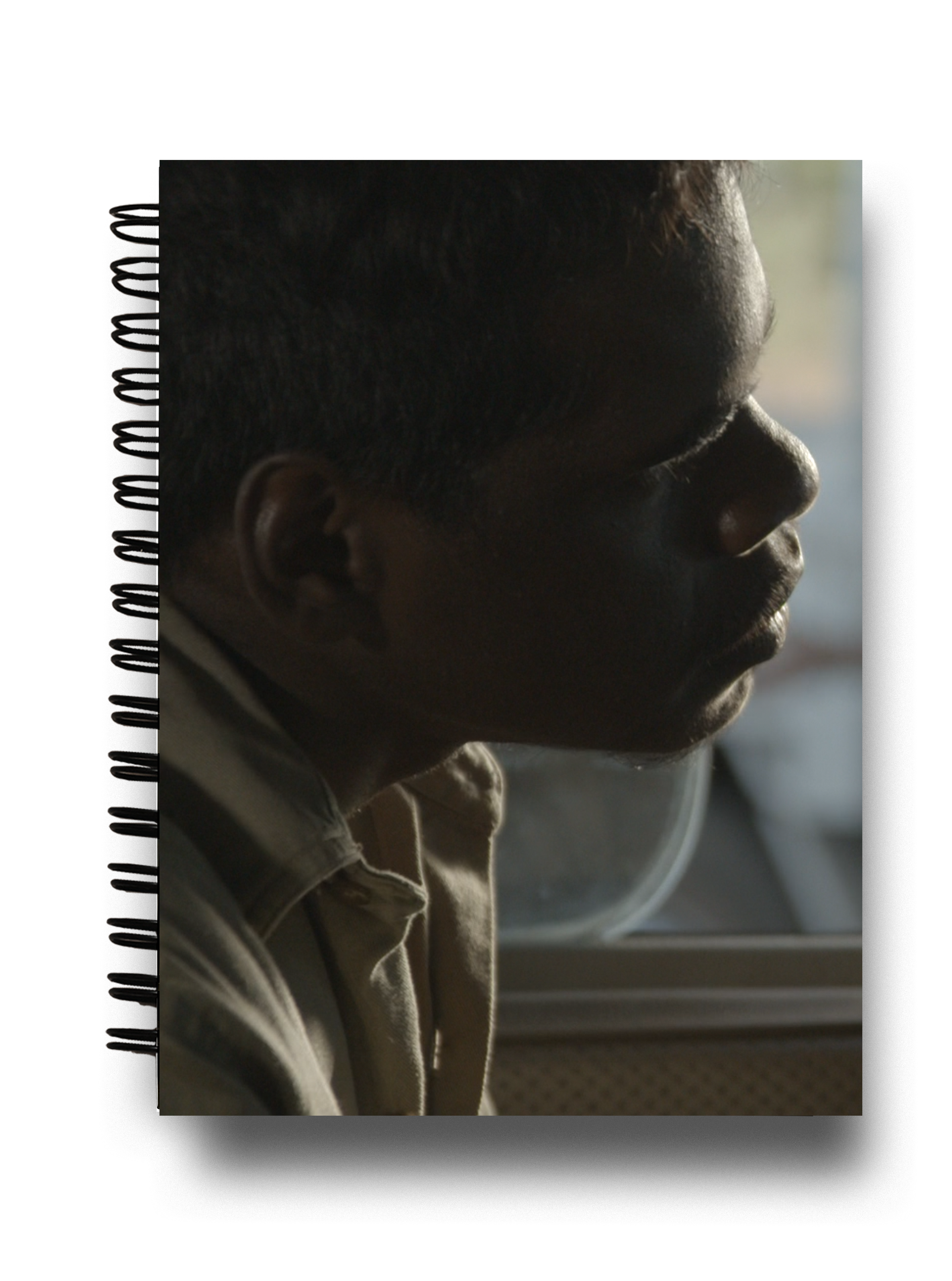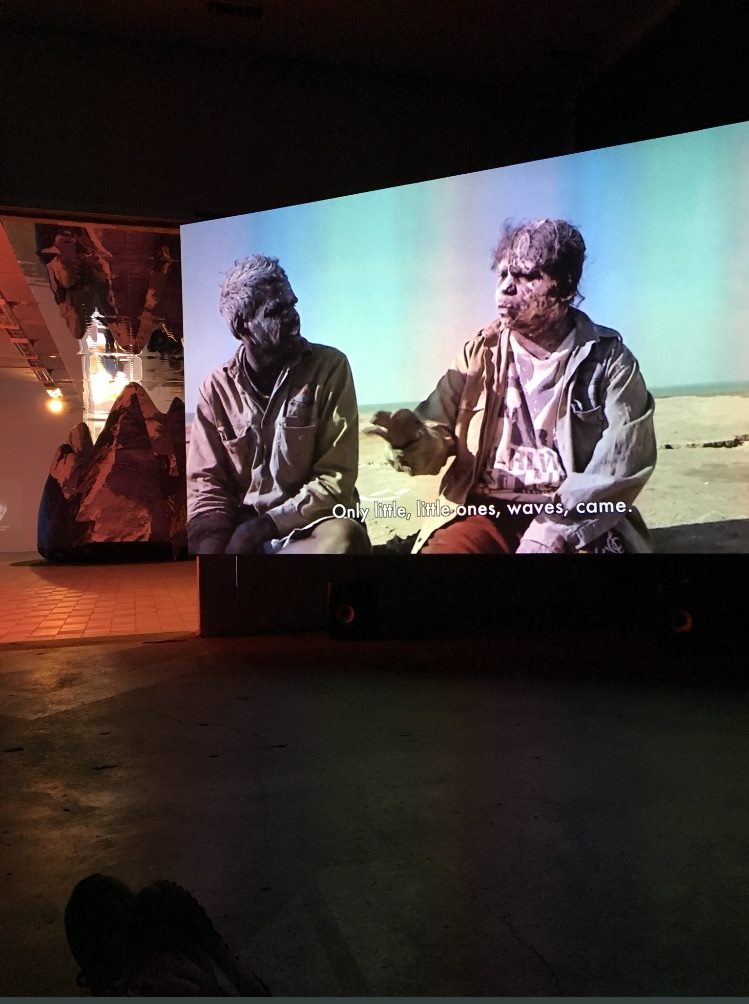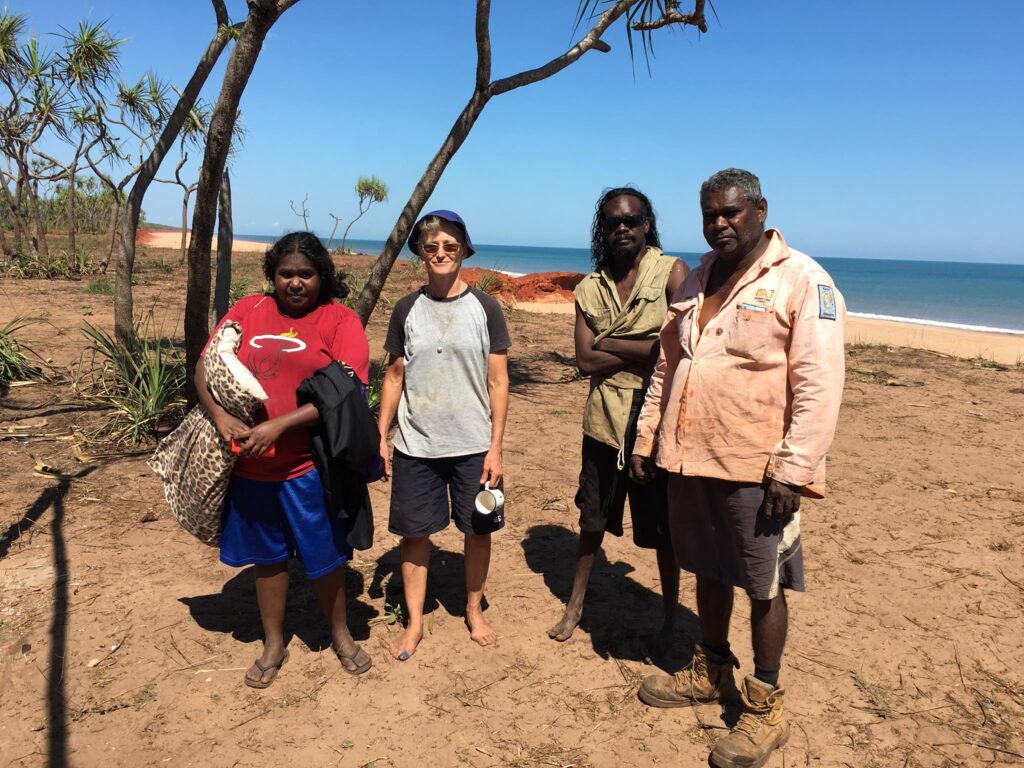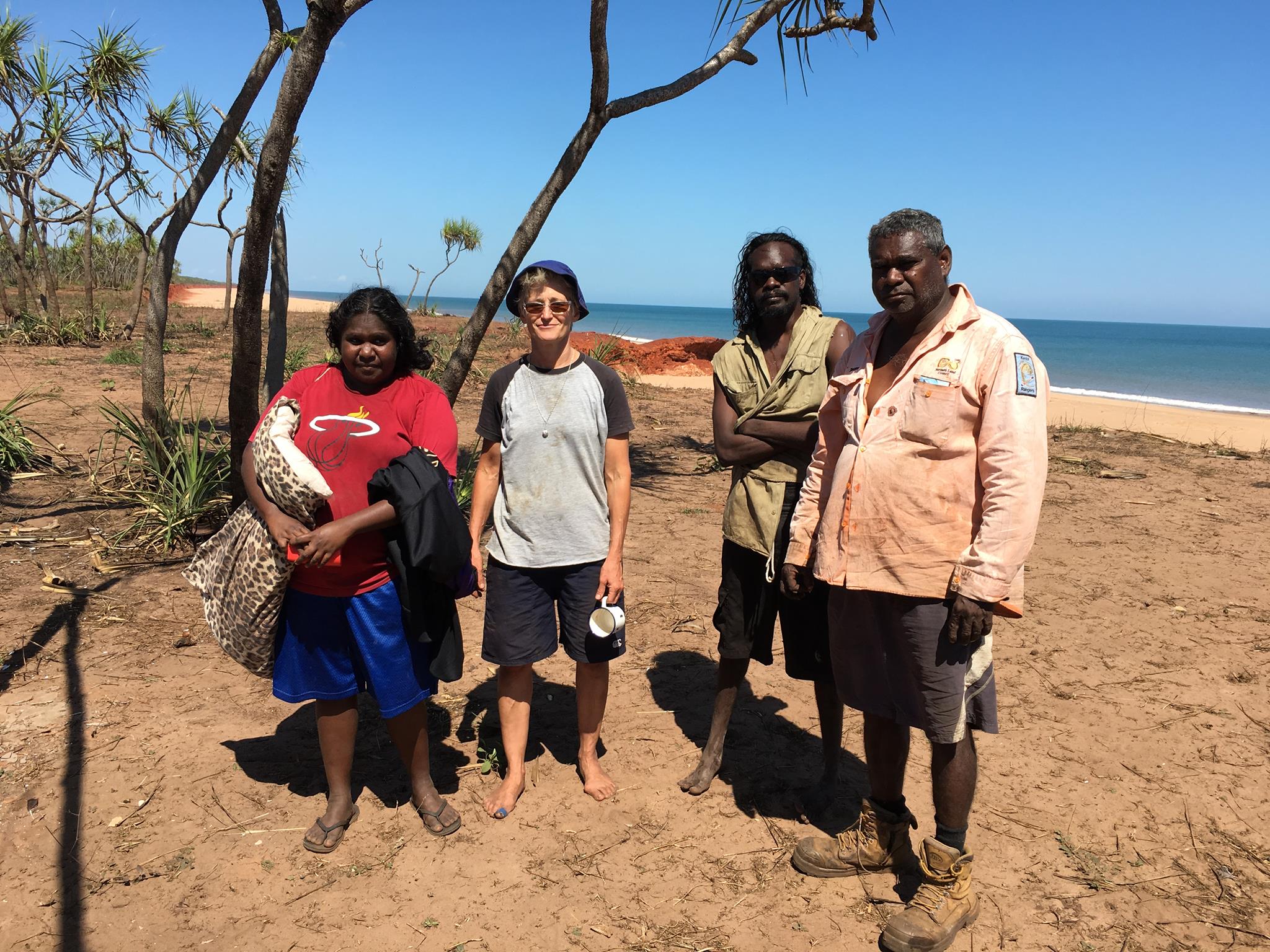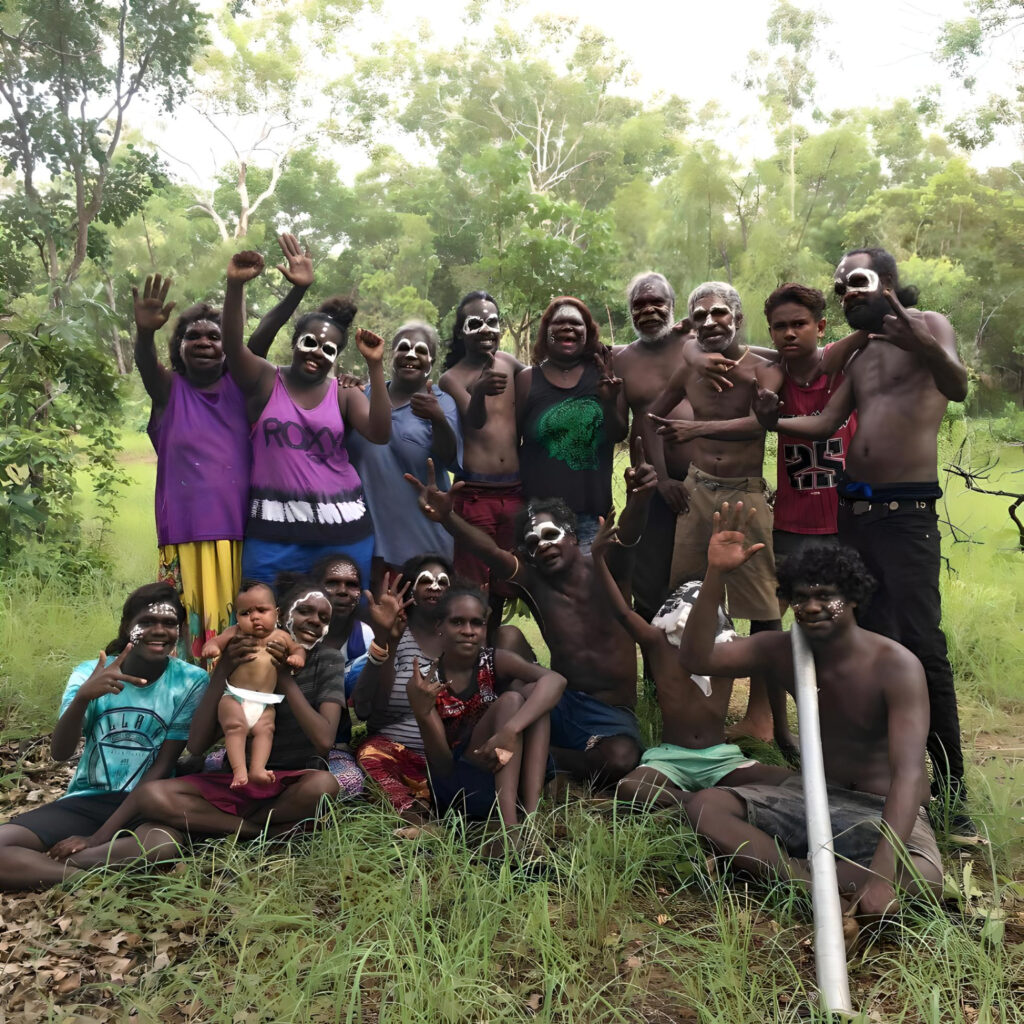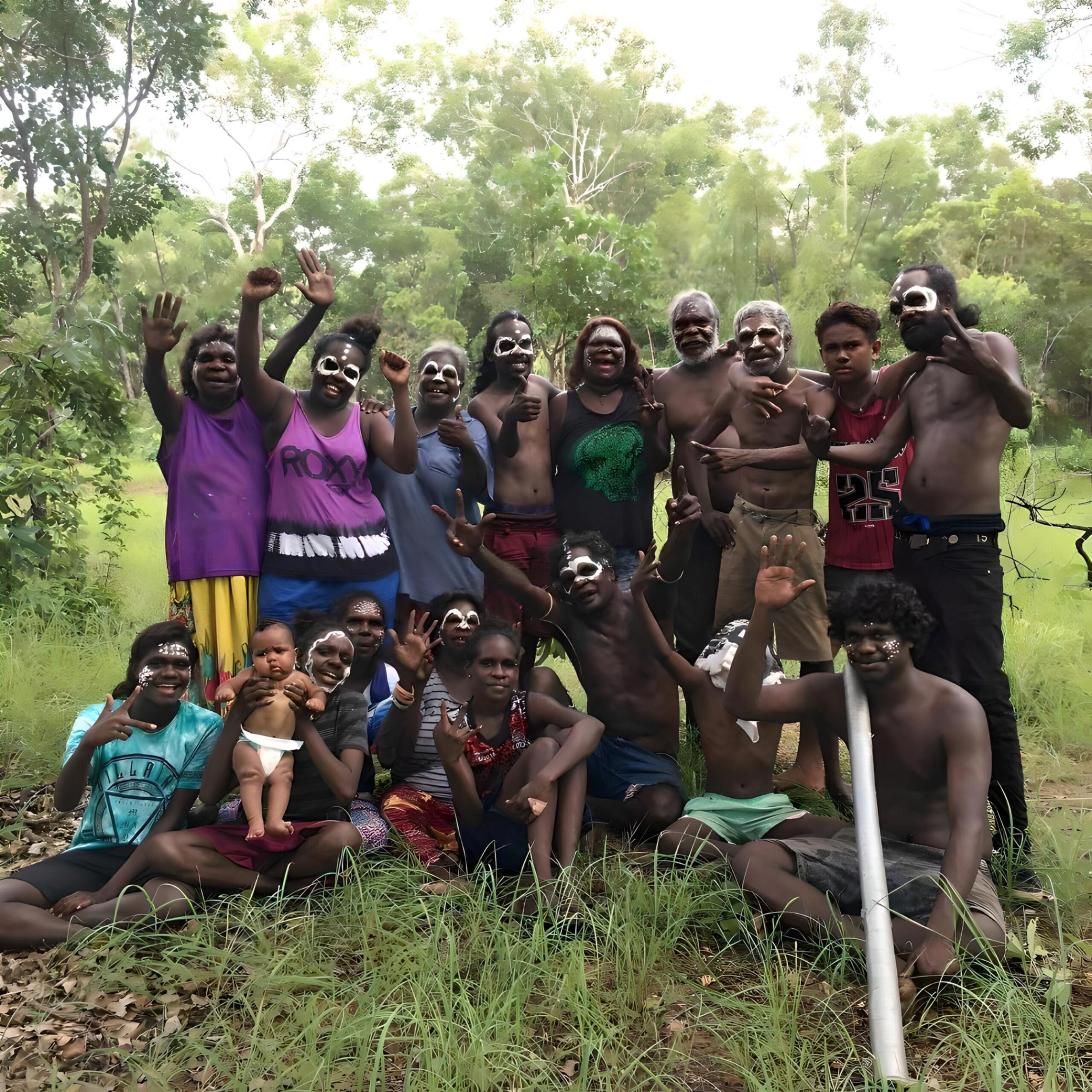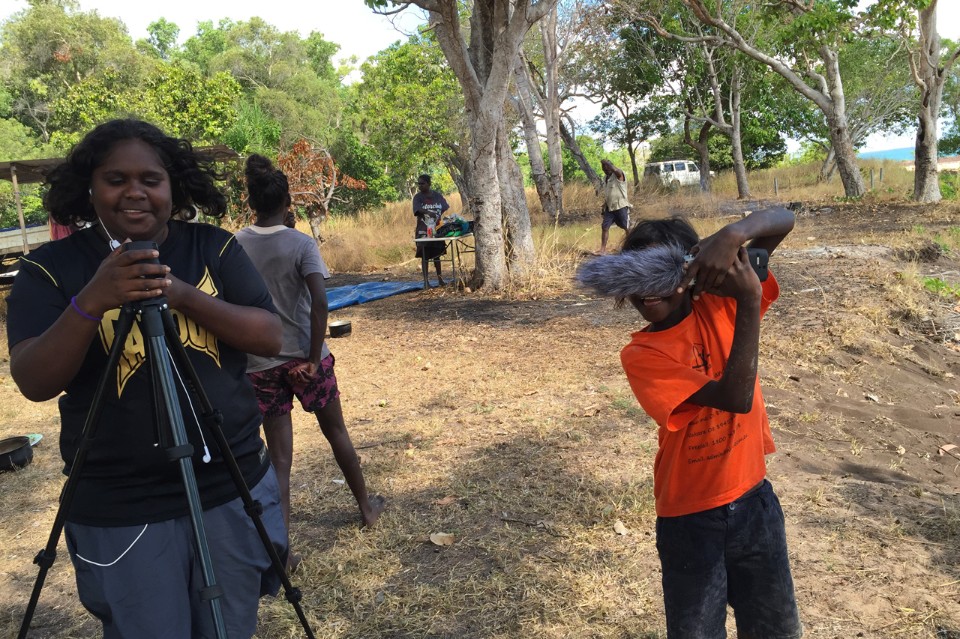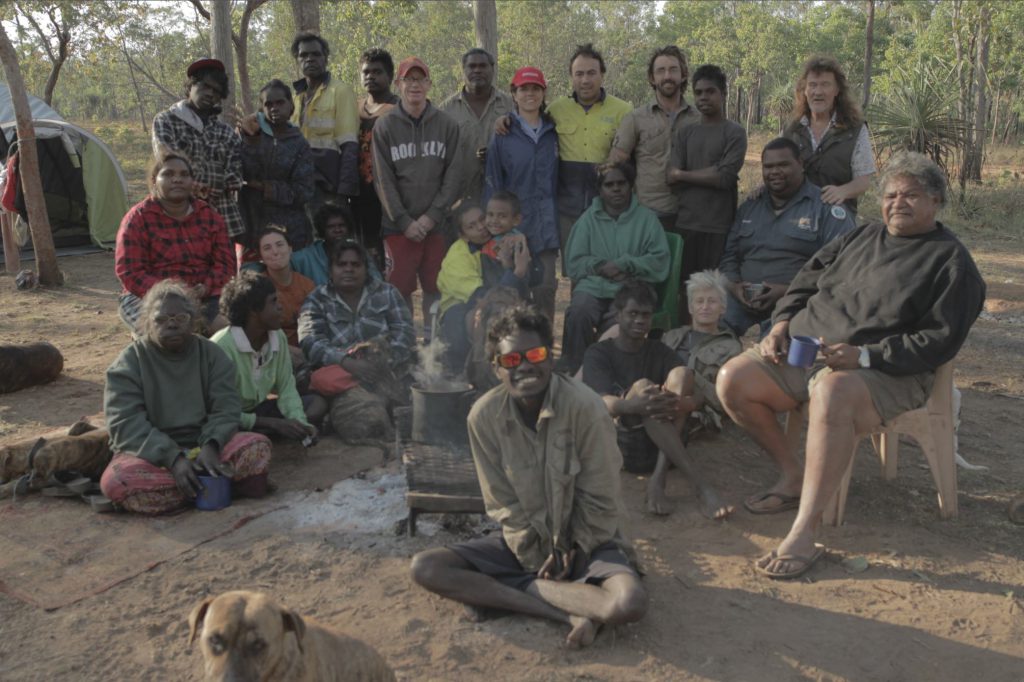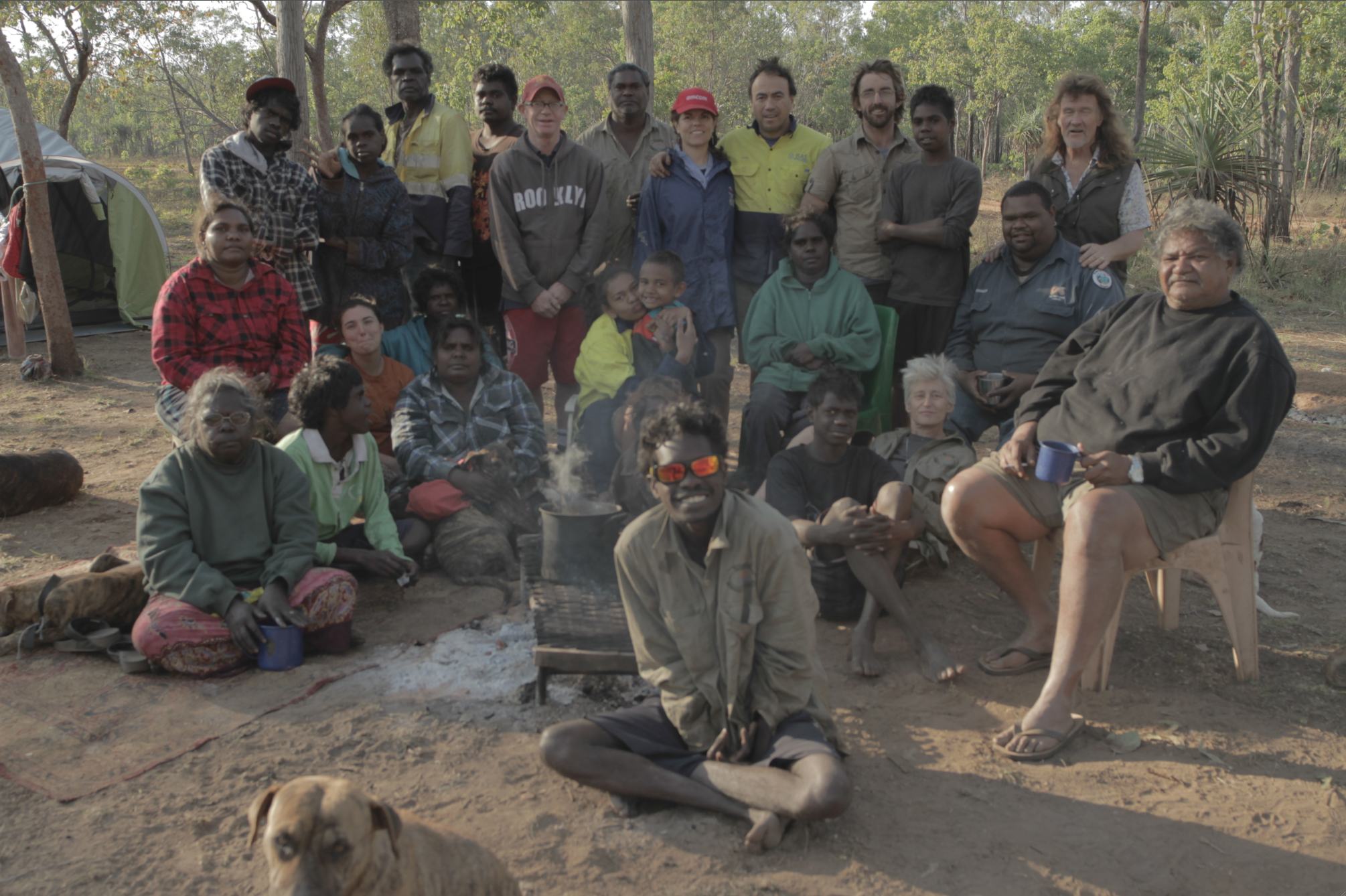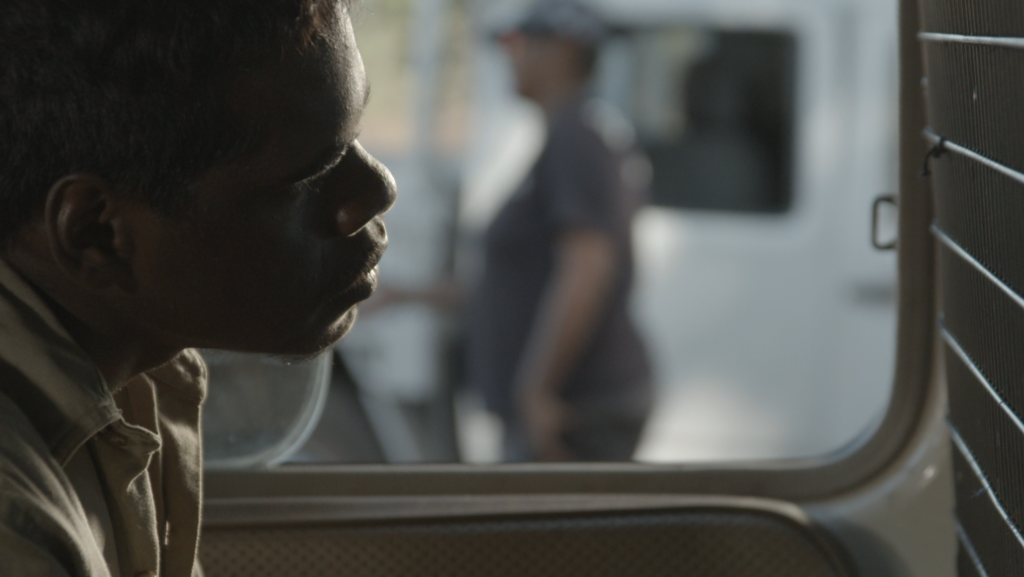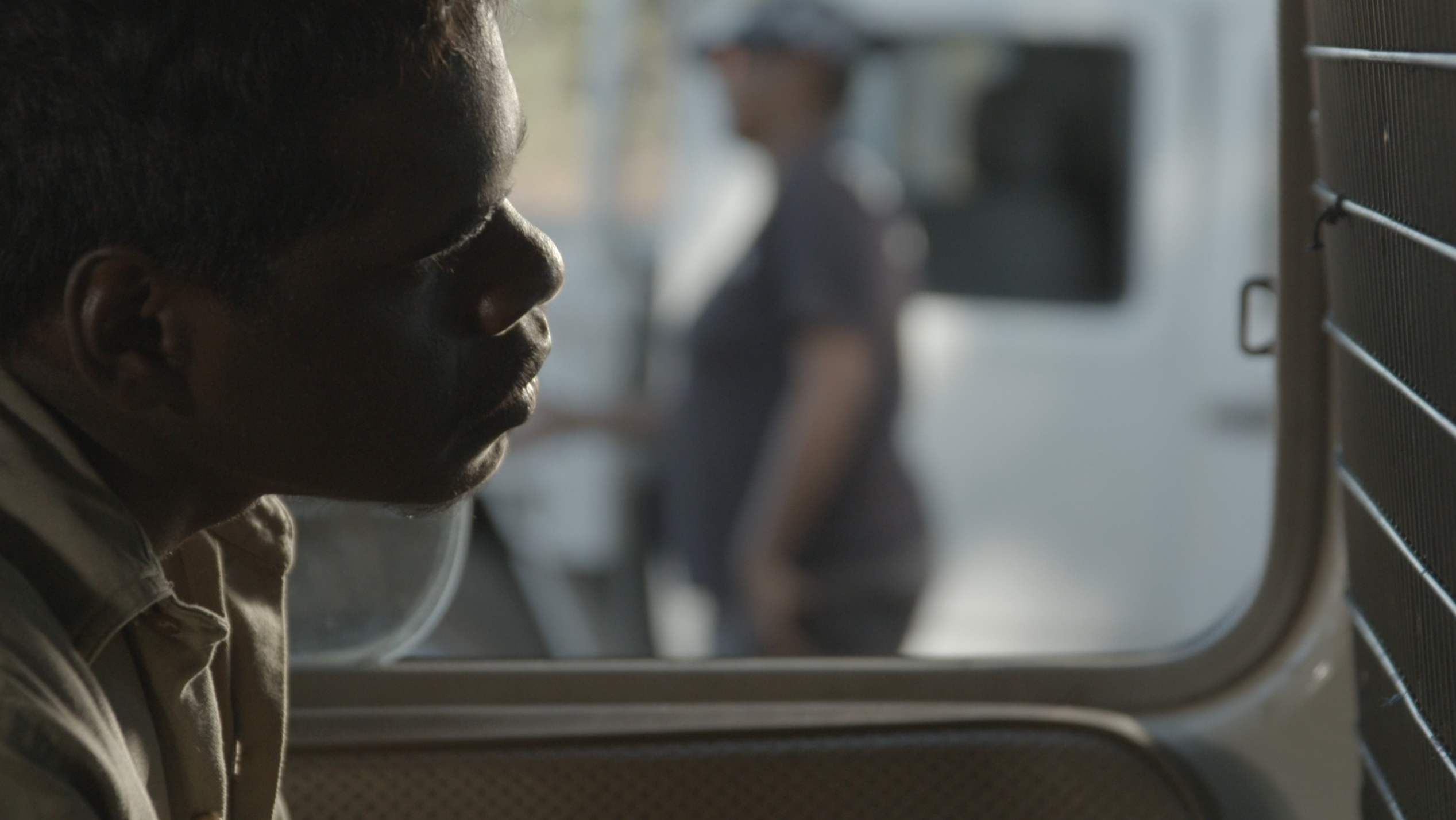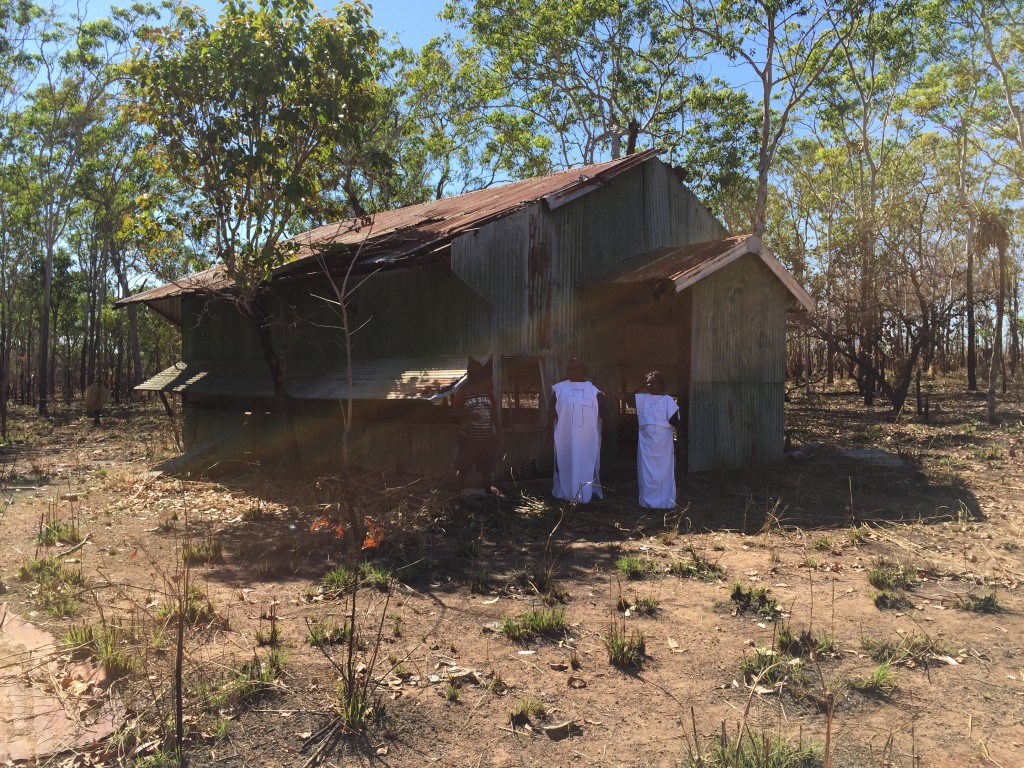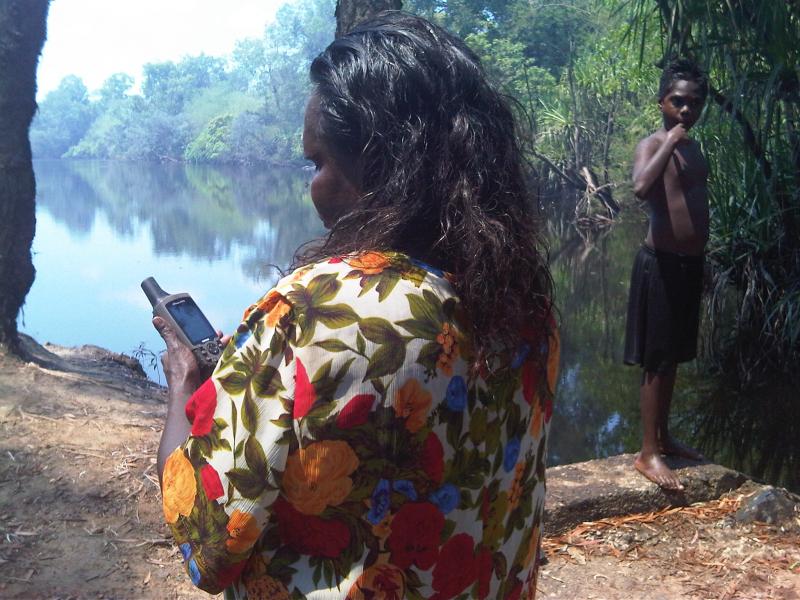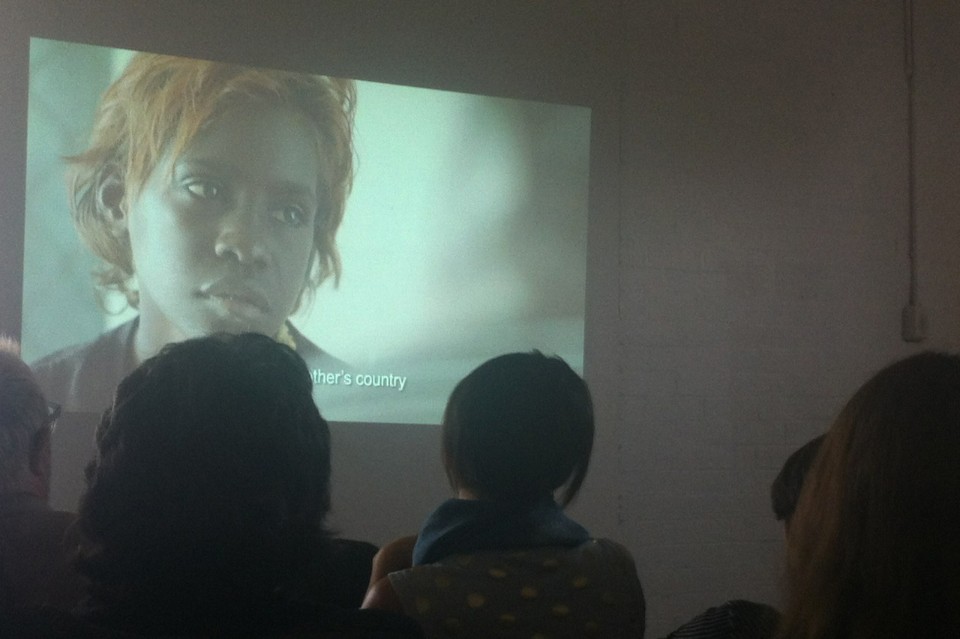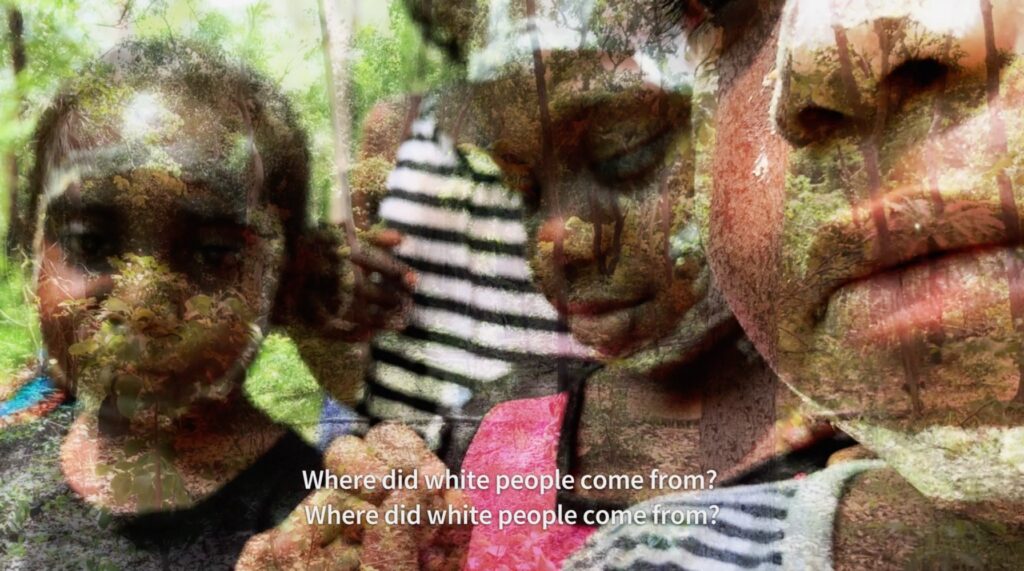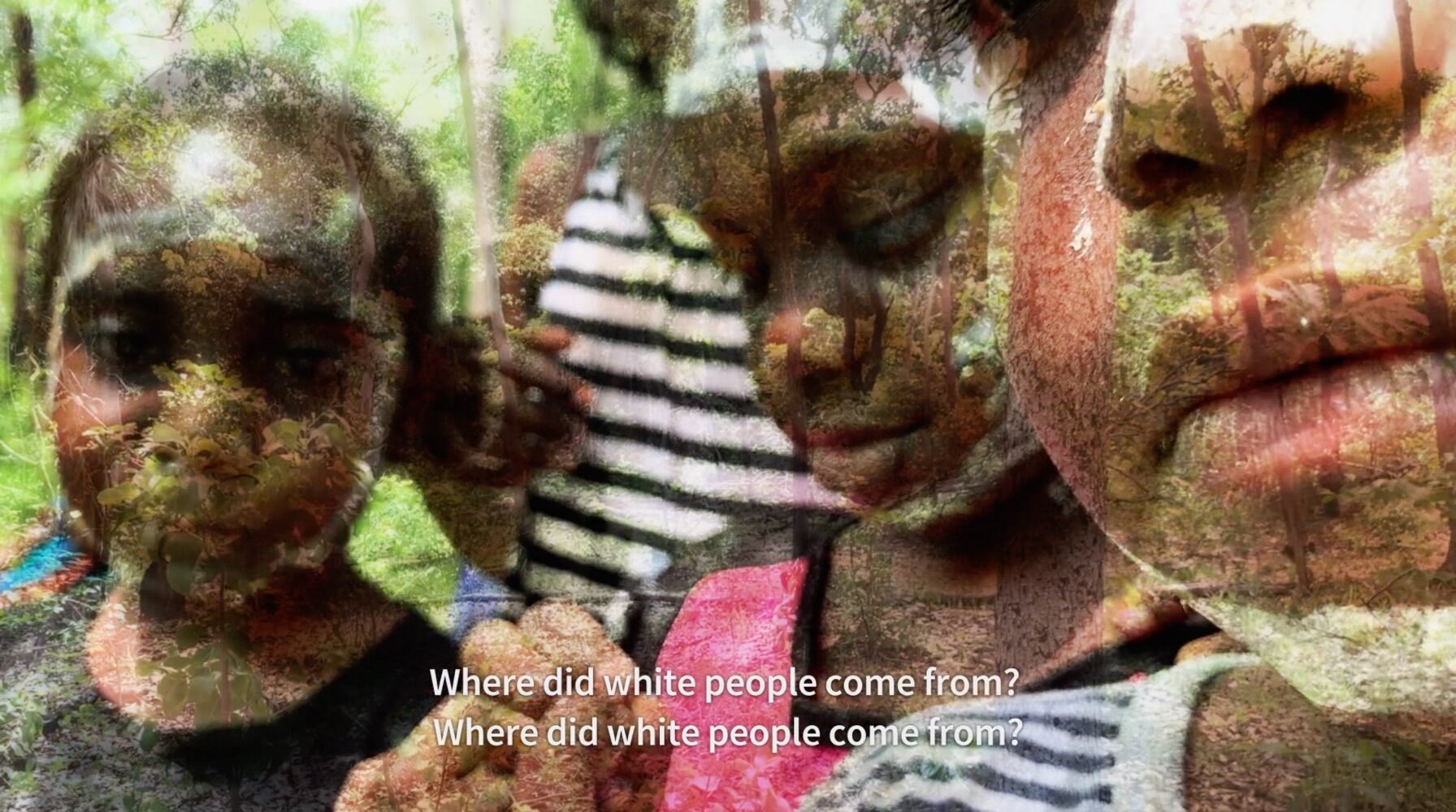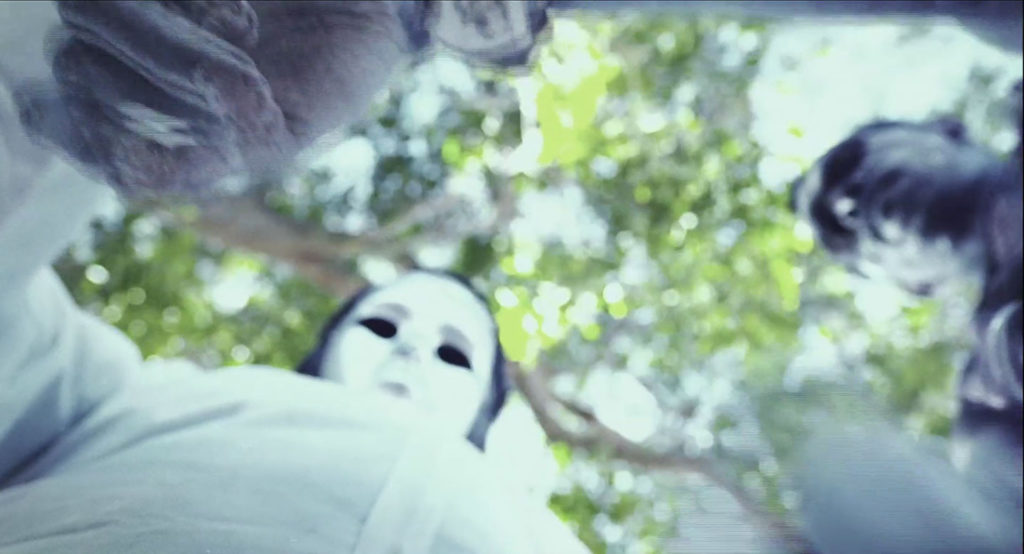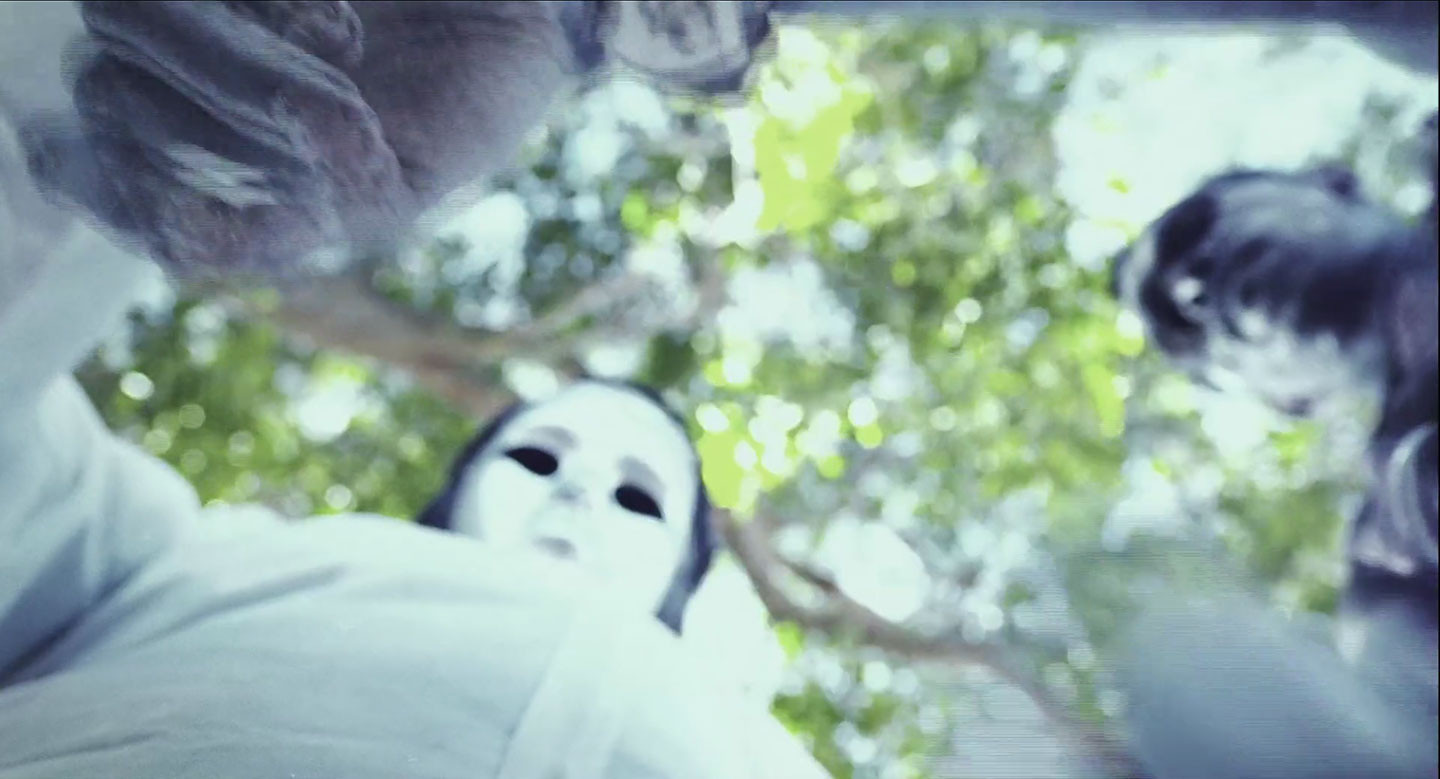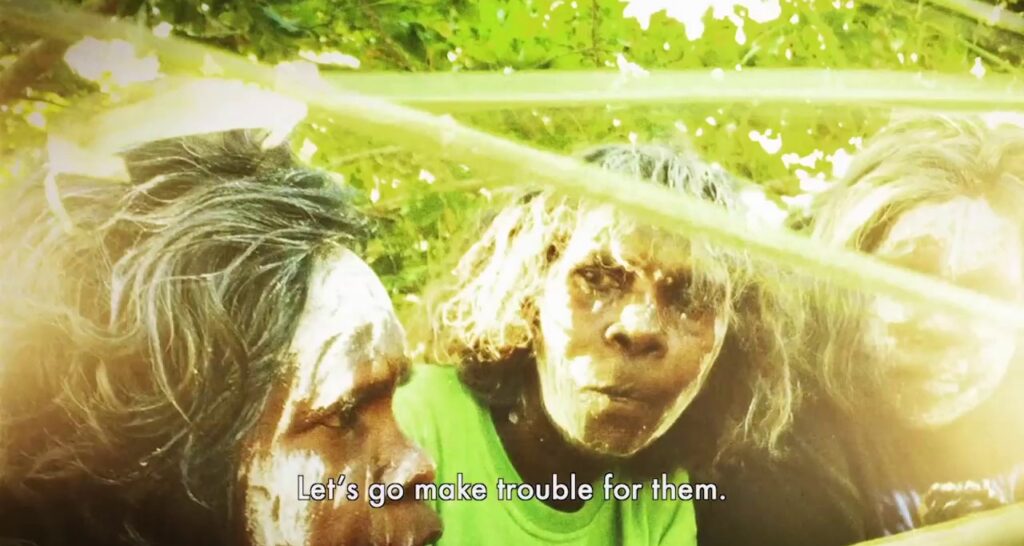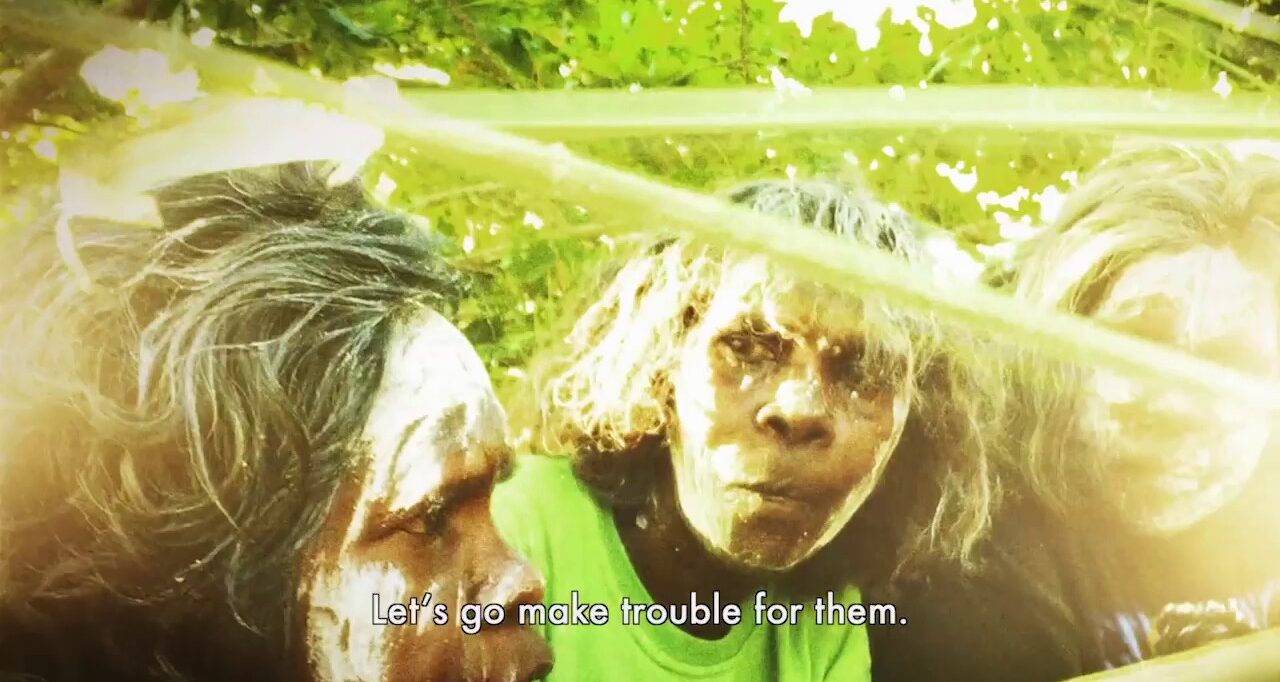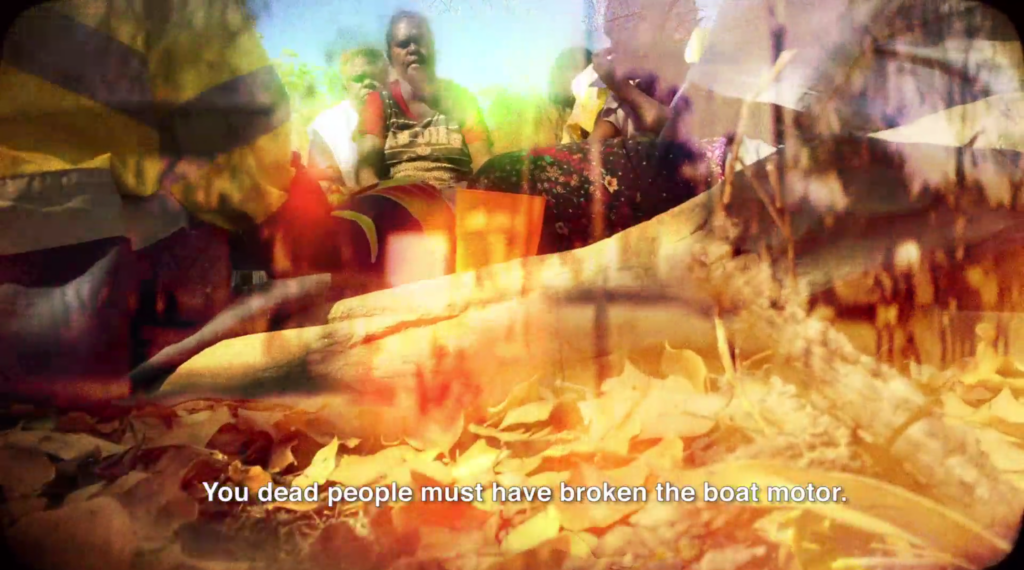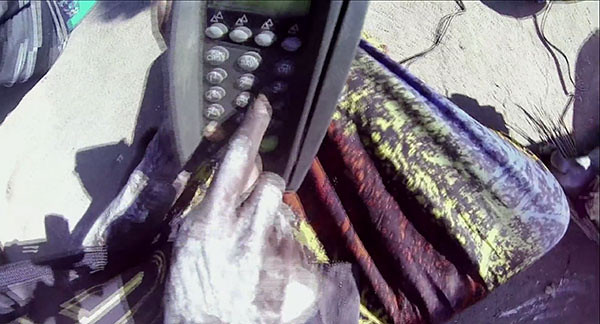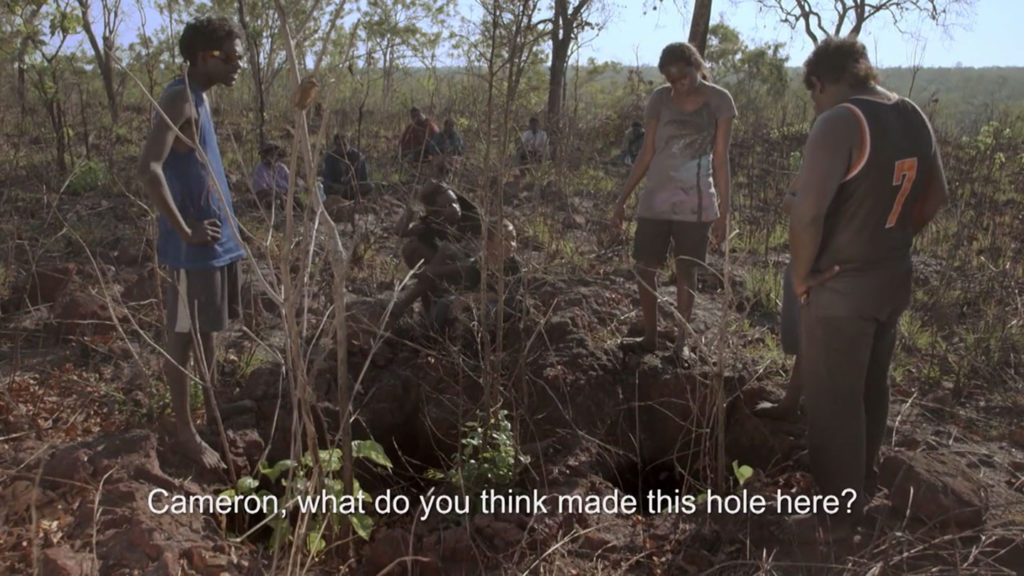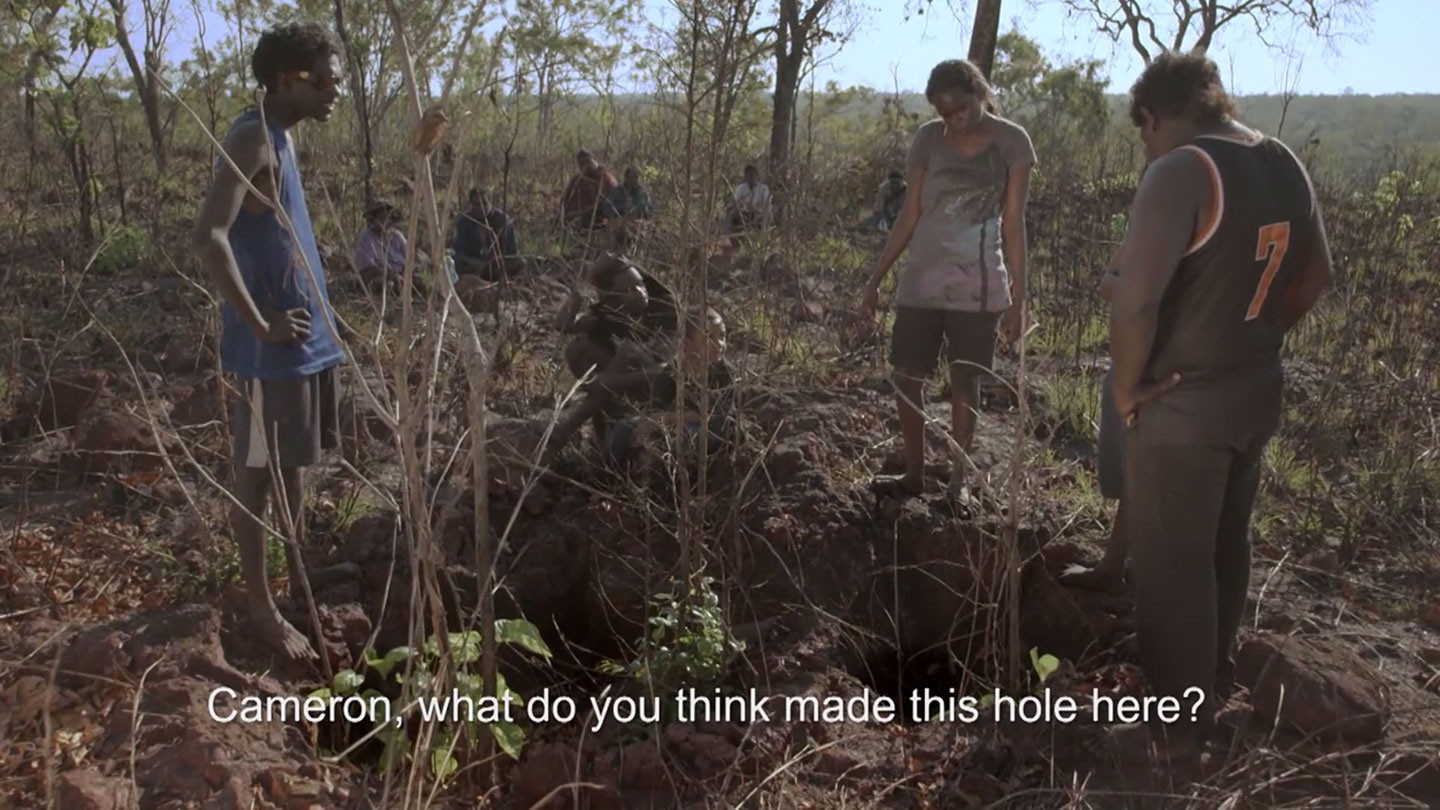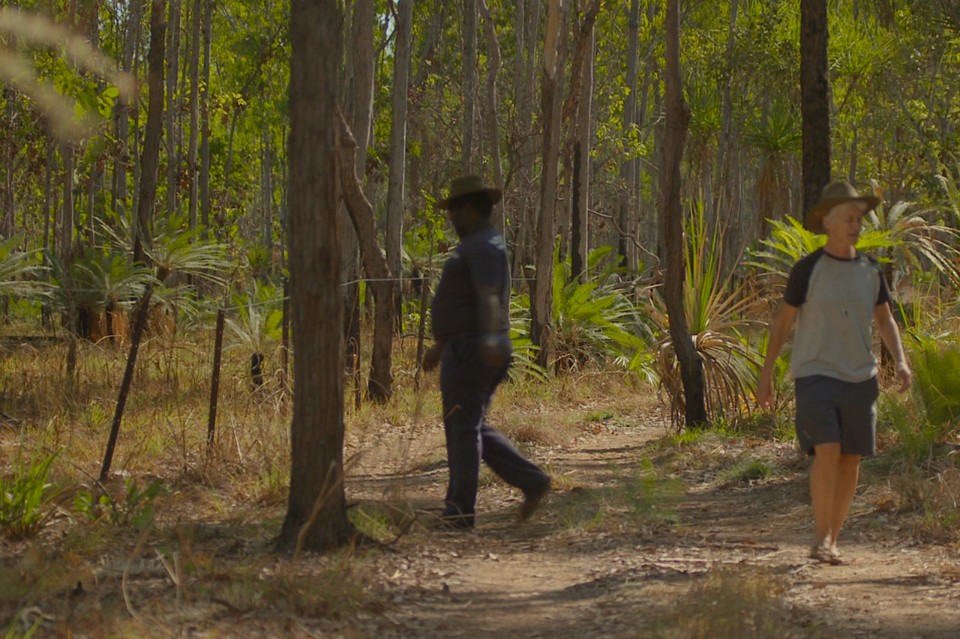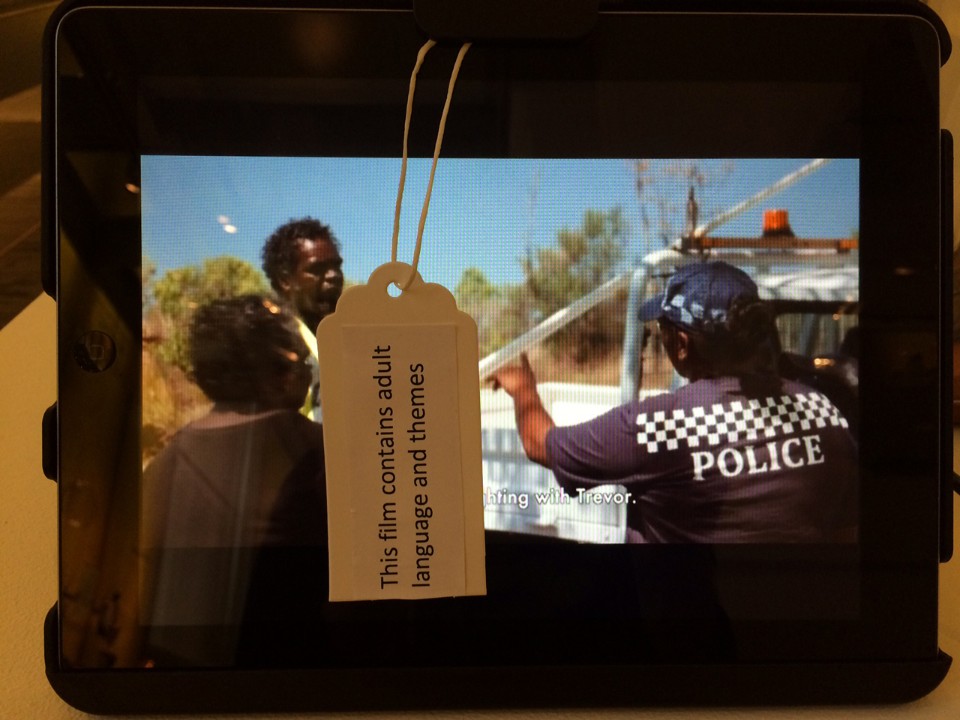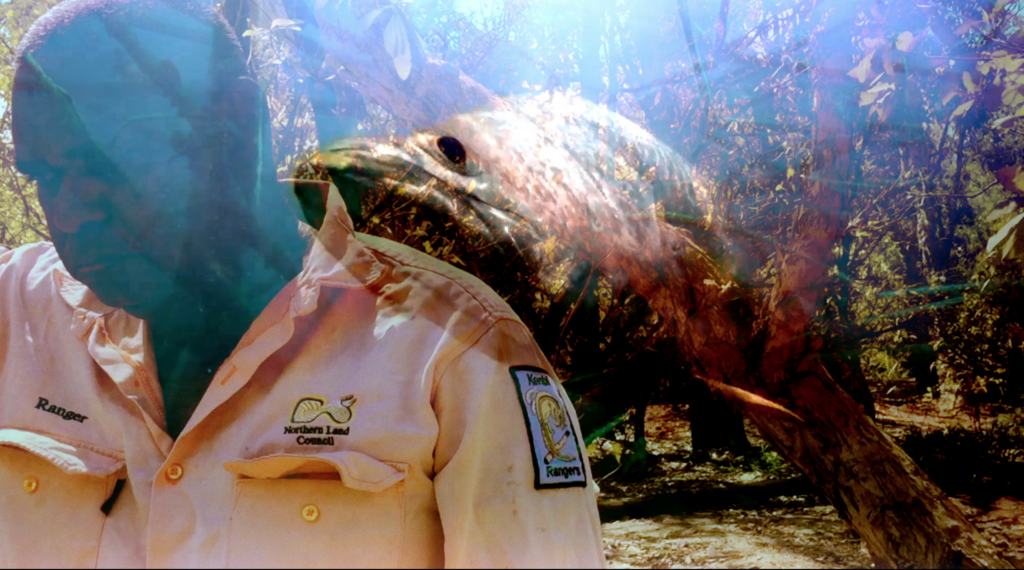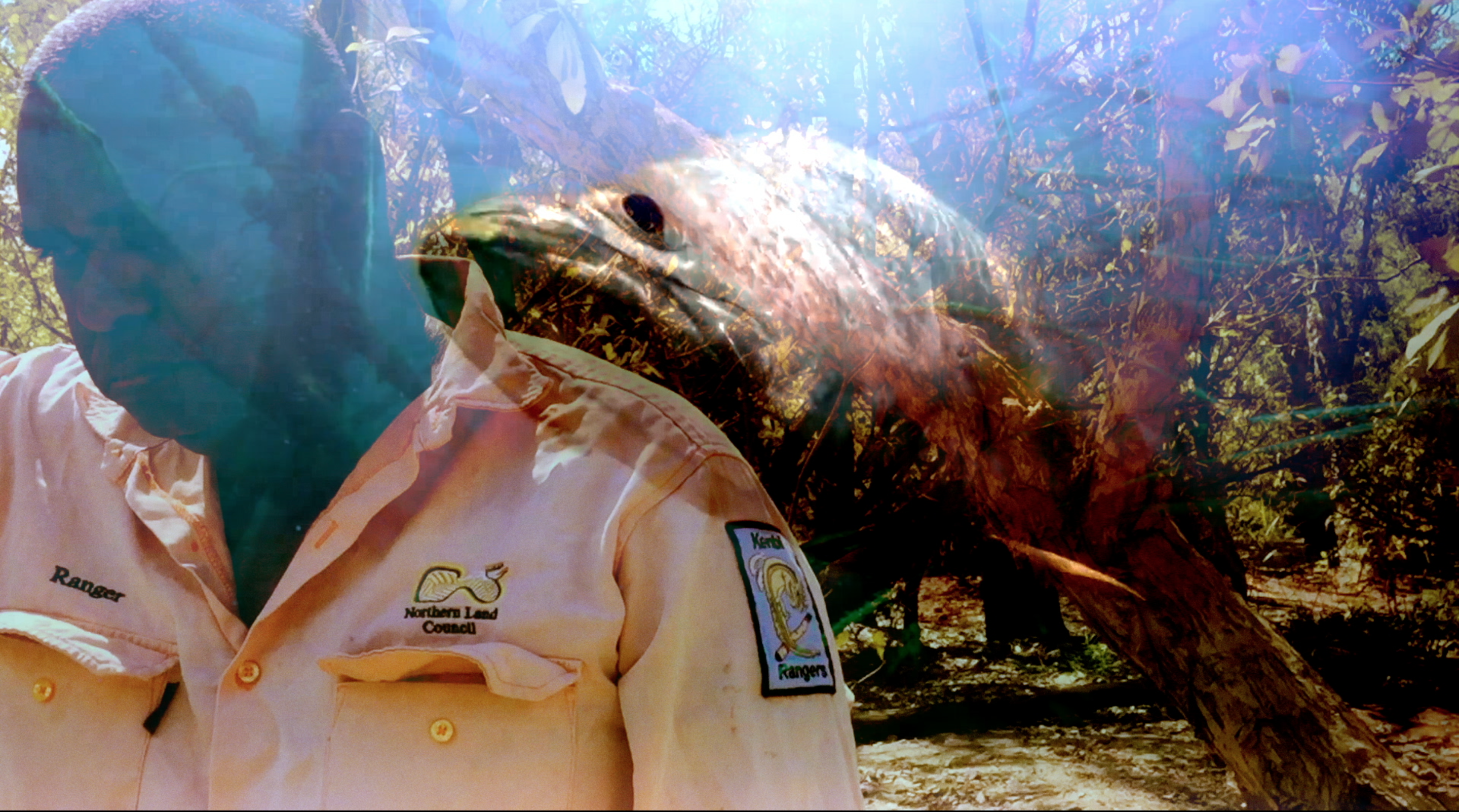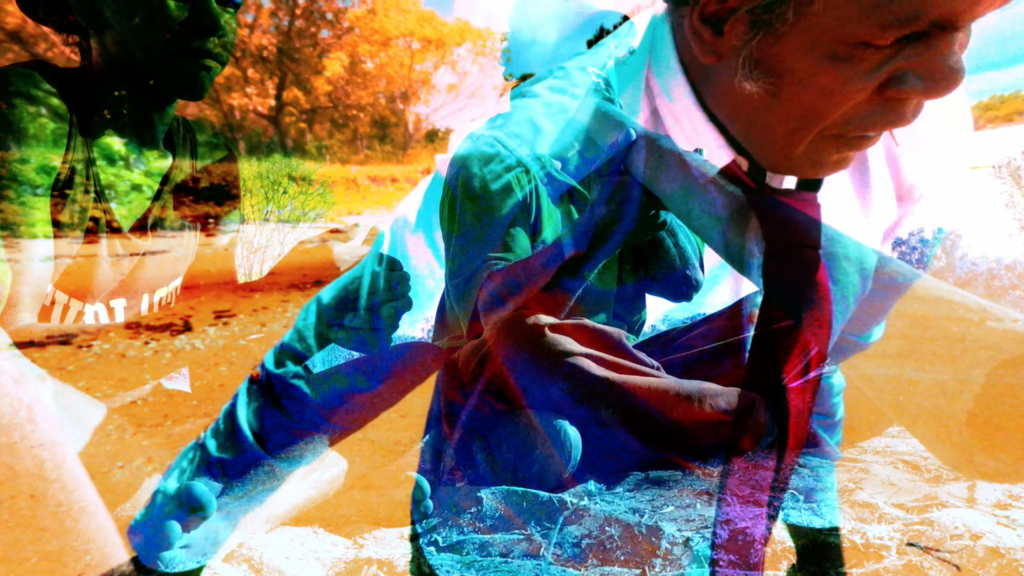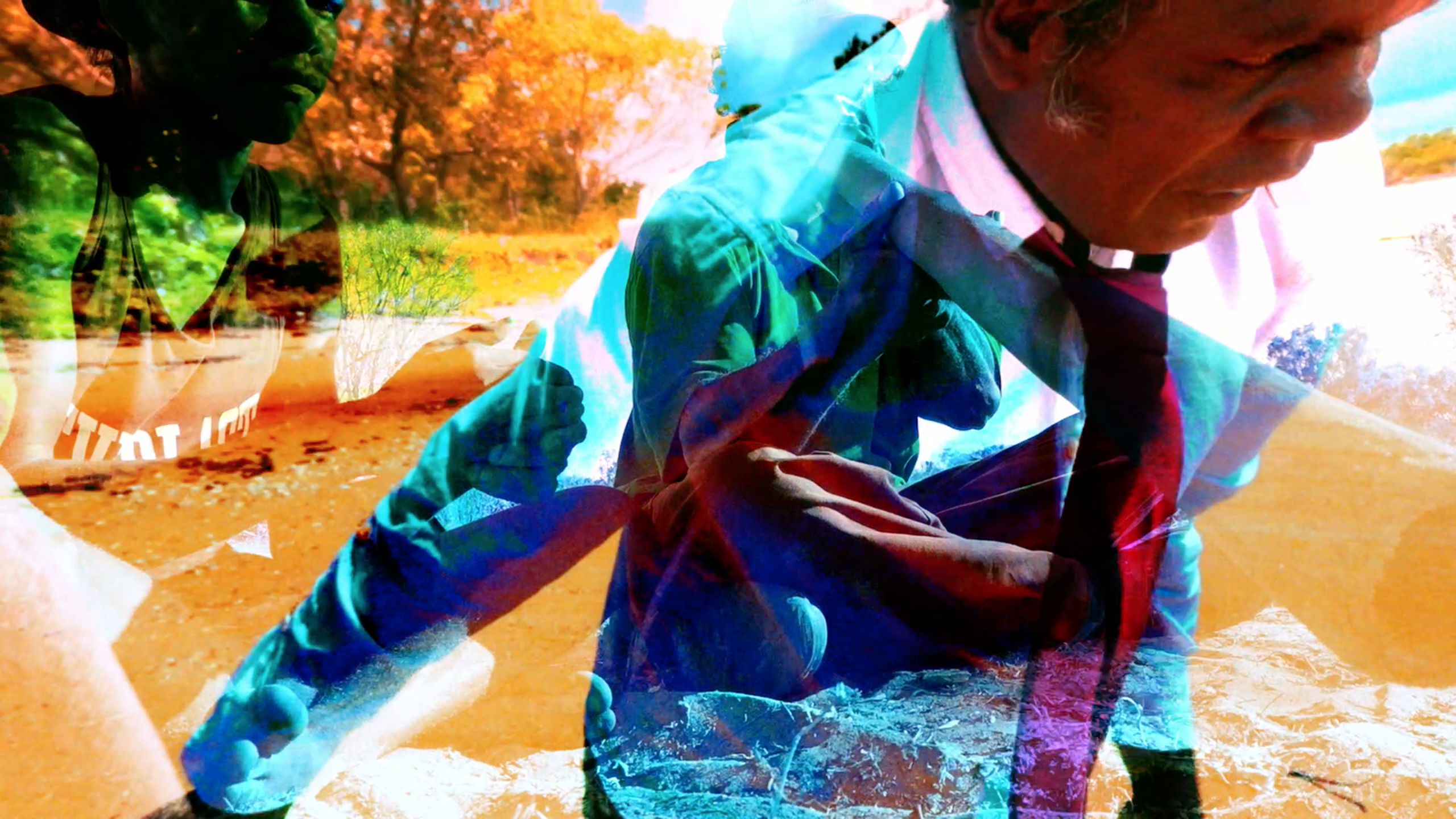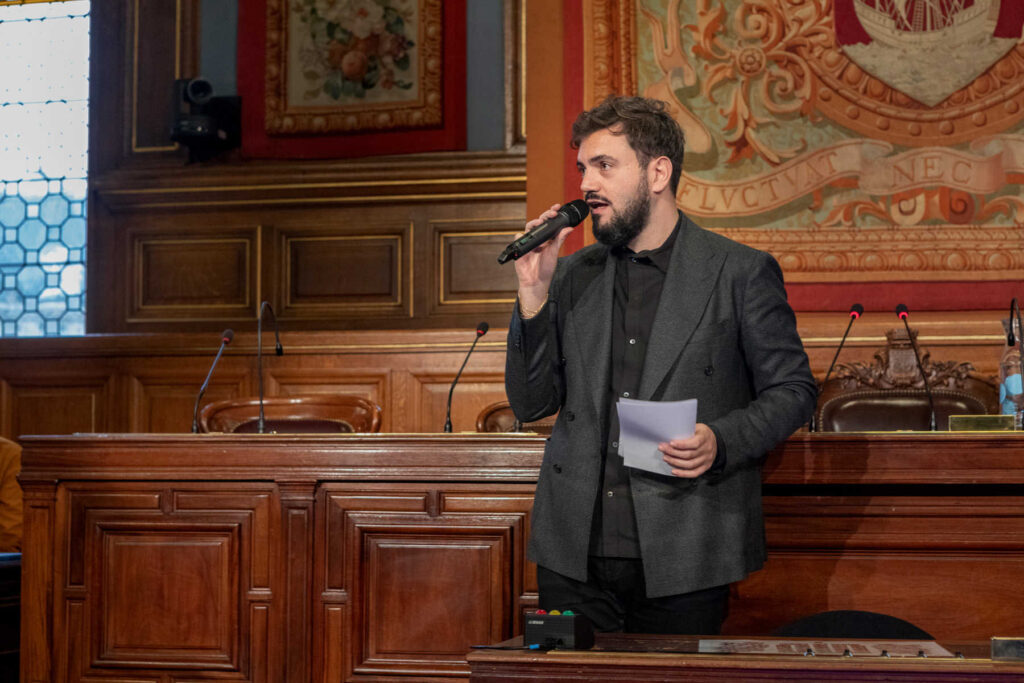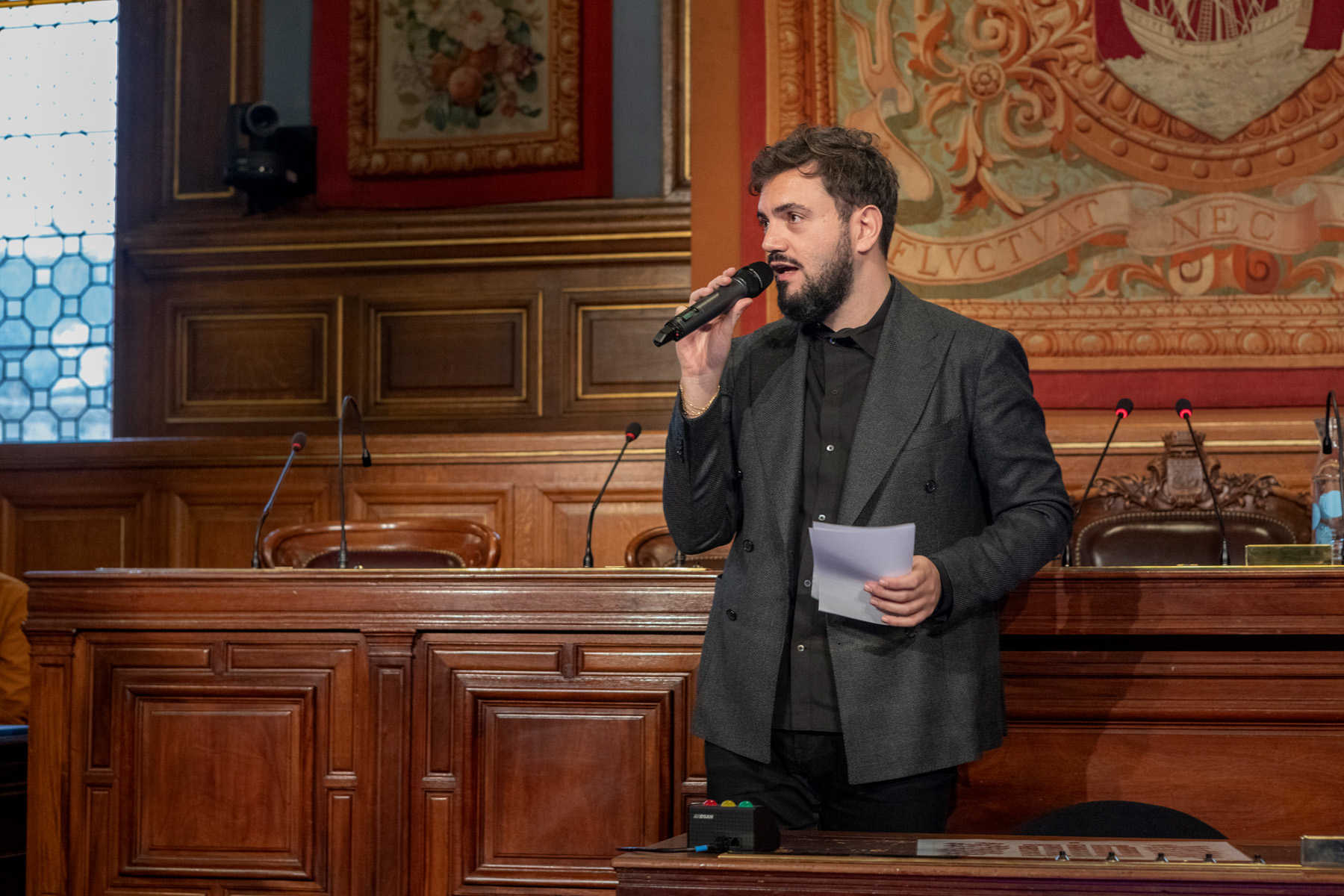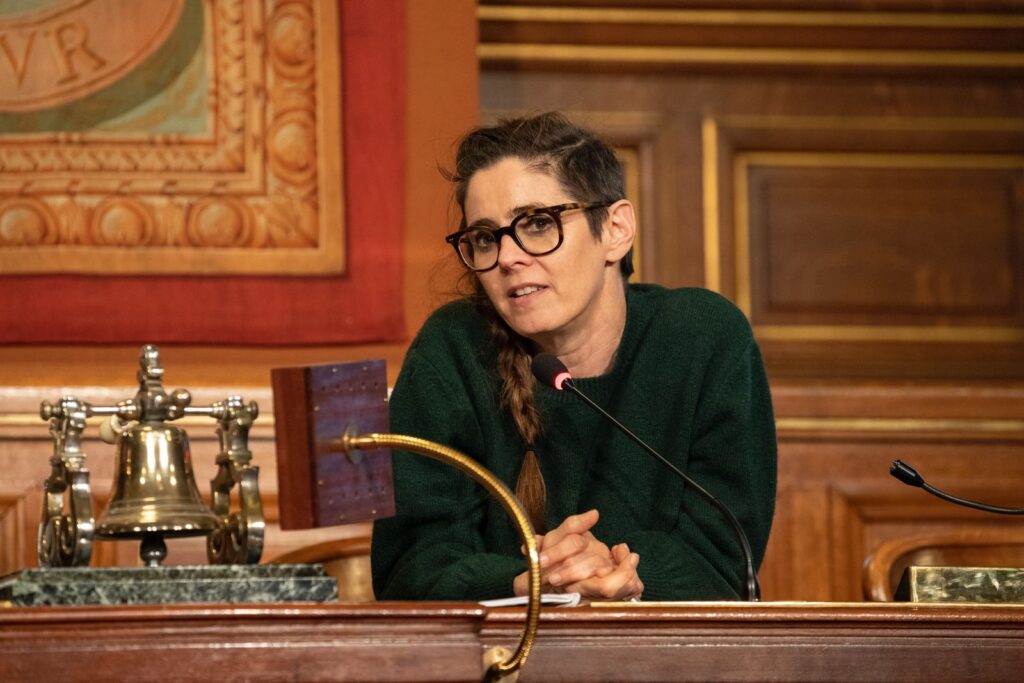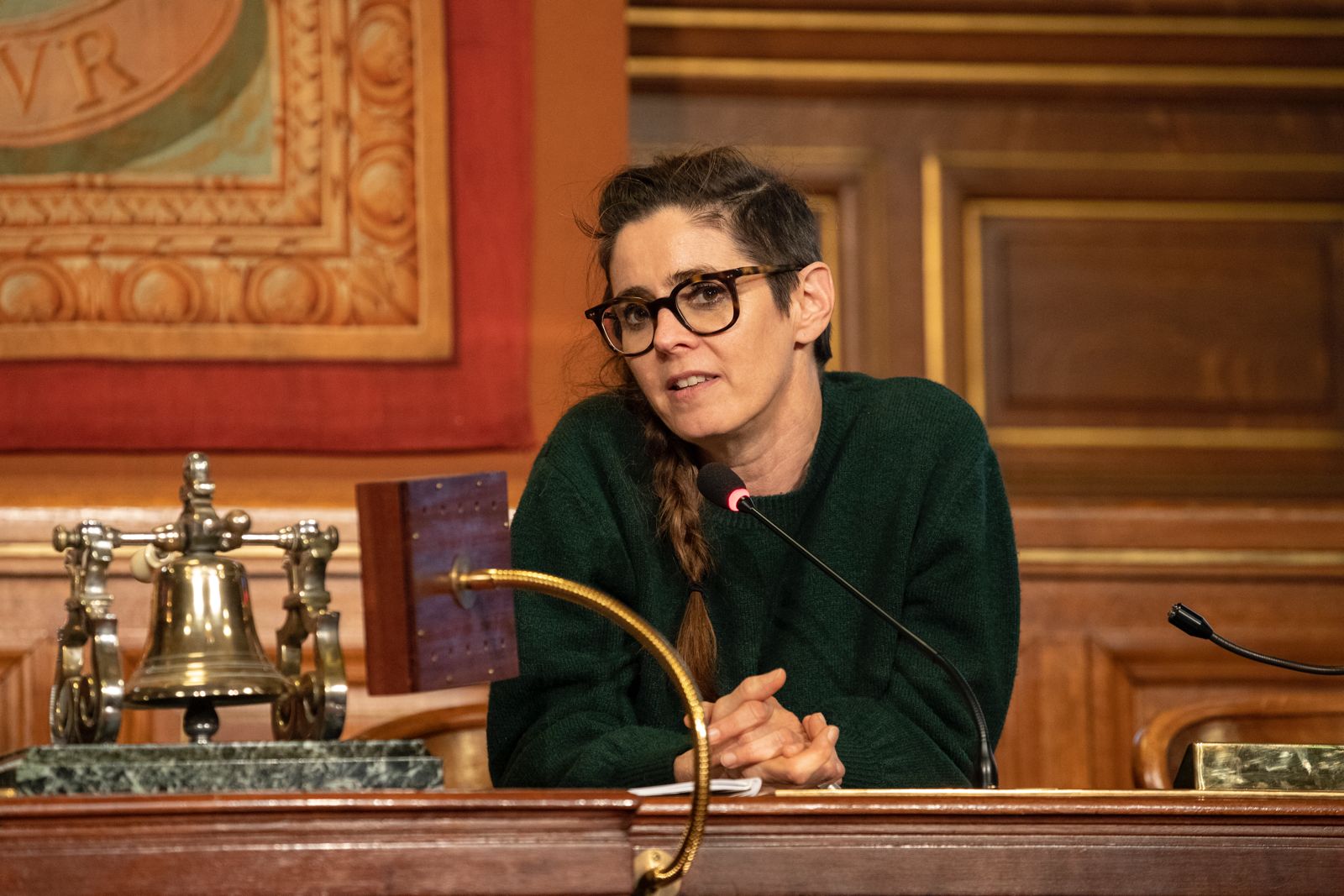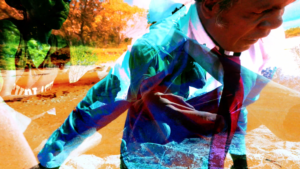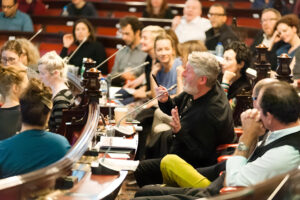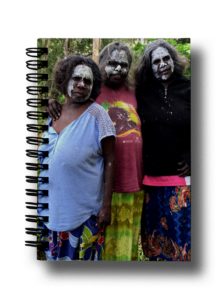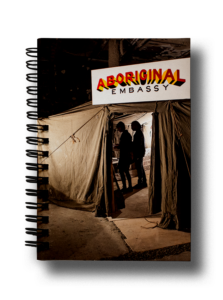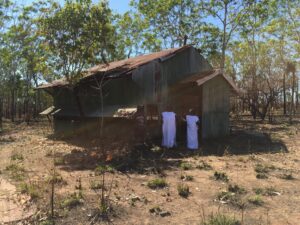Visible – In a conversation with Kim Turcot DiFruscia, in eflux journal #53, in discussing your practice with the Karrabing Film Collective, you introduce the notion of obligation. Specifically, in the act of entering the Karrabing community, you refer to the importance of leaving individual narratives behind, and preexisting, even seducing forms of identity, in order to commit to immanent forms of social obligations. Could you elaborate on this notion and on how it may become a binding element in shaping common spaces to inhabit with others?
Elizabeth A. Povinelli – I first used obligation in a conceptual sense in Economies of Abandonment. I was grasping for a word that would conjure the belated nature of social and ethical commitment—a form of politics and ethics that breaks the transitive grammar of liberalism that assumes a subject and action and an object on which I act. I am not obligated to someone, something, some mood or action. I find myself already bound to a formative outside in the moment of encountering that someone, something, some mood or action. I wanted a term that captured this bondage of ethical and political being. I am obliged to do such and such. But the reverberations of finding oneself in encounter are crucial here. I find myself. I find myself in encounter. The subject is in continual disturbance as she continually confronts the nature of her extimate body as a body built out of materials outside and before its self. Arendt’s concept of action and disclosure are close to what I mean here, as are Édouard Glissant’s notions of relation and opacity.
In Economies of Abandonment I pivoted part of my argument about obligation on two pieces of fiction, Ursula Le Guin’s 1973 The One Who Walked Away from Omelas and Charles Burnett’s 1978 The Killer of Sheep. The Ones Who Walk Away from Omelas imagines a city in which the happiness and well-being of its inhabitants depend on one small child being constrained and abused forever in a small dark closet. I read Le Guin as rejecting an ethics of liberal empathy. Instead, the ethical imperative is to know that your own good life is already in—obligated to—her constraint and abuse, and as a result, you must either relinquish your perfect health and happiness (and the idea that the health and happiness you experience is yours) or recommit to the current organization and distribution of powers and affects. At the end of the story, some people walk away from Omelas and its paradox.
Burnett’s film, and his body of work more generally, castigates liberal empathy from the perspective of those assigned to the closet, in this case, African-Americans living in the wake of the Watts Uprising in Los Angeles. Across a multitude of loosely coordinated neorealist vignettes and plots we enter the life of Stan, and African-American man working in a slaughterhouse, and the fantasy that everyone could simply walk away from injustice. Throughout, viewers witness a level of exhaustion and endurance rarely captured in the film as Stan navigates and confronts white privilege and its consequences across his world; and at the end of the film, Stan remains where he began, pushing a group of sheep down a metal corridor to their slaughter. Burnett has characterized his film as hopeful insofar as Stan perseveres—he ‘has decided to persevere and fight on despite society’s place for him’. We can see Stan’s supreme exhaustion as an index of the social body struggling to pull down its closet of abuse while others are straining to keep it in place so that they may stay in their benighted city. And we can understand his endurance as a heroic refusal not to be obliged to their distribution of health and happiness. The First Nation Anishinaabe theorist Gerald Vizenor called this form of persistence ‘survivance’.1
I think these two pieces of fiction capture a feature of my attraction to obligation, namely that the belated reverberations of being are merely one moment in a more complex material unfolding of ethics and politics. Okay, so I find myself already obligated to a formation and distribution of existence. And in finding myself there, I am pleased or disturbed, enraged or quieted. I may be enraged to find that I am being used as other people’s liver or sewage system. Or I might be enraged to be told that I am using people in this way. Think here of wages and rages of whiteness (white heteronormativity) in the era of Trump and the alt-right in the US, of various new fascisms emerging in Austria, Germany, Poland, and other European regions. The point is that in finding that I am not inside myself but a result of a complex terrain of distributed extractions and surpluses the question remains how can I and how will I shift the distribution of materiality and identity. Again, the complexity of obligation as a reverberating extimacy2 of existence means that persons can find themselves obligated across existing modes of identity and difference and still be gaining from or be denigrated within the broader terrain.
It might be useful to note that I am not overly attached to concepts in a nominal form. Because obligation means to conjure a state of existence in which one is always already bounded to others and other modes of being without being identical to them. I wrote two pieces3 for Ashkan Sepahvand that try to conjure the complex obligations of this extimate body. One, Fires, Fog, Wind thinks of desire from the perspective of toxicity and its distributions across race, colonialism, and class. In it, I describe a game my siblings and I played, a game played by generations of kids in the American South. In the 1960s, trucks filled with DDT would drive down residential streets, discharging the chemical in clouds of toxicity. My siblings and I would run behind them, the game being how long you could hold your breath before your lungs gave out. The question now is: what were we thinking? What was anyone thinking? But I find myself obligated to this past in multiple ways, several of which are: the continued jubilance I feel when remembering our madness; the toxic remainder that has long settled into my flesh; the profit made from these contaminants that added to the accumulation of wellbeing in some regions rather than others.
In the long run, the circuits of harm run through what originally was sealed off. Aimé Césaire similarly argues ‘colonization works to decivilize the colonizer, to brutalize him in the true sense of the word, to degrade him, to awaken him to buried instincts, to covetousness, violence, race hatred, and moral relativism’. ‘[E]ach time a head is cut off or an eye put out in Vietnam and in France they accept the fact, each time a little girl is raped and in France they accept the fact, each time a Madagascan is tortured and in France they accept the fact, civilization acquires another dead weight, a universal regression takes place, a gangrene sets in, a centre of infection begins to spread; and that at the end of all these treaties that have been violated, all these lies that have been propagated, all these punitive expeditions that have been tolerated, all these prisoners who have been tied up and “interrogated”, all these patriots who have been tortured, at the end of all the racial pride that has been encouraged, all the boastfulness that has been displayed, a poison has been instilled into the veins of Europe and, slowly but surely, the continent proceeds toward savagery.’
All of this is to say that the consequences of finding oneself in a material terrain of obligated (extimate) existence cannot be resolved in such a way that anyone in the terrain simply remains in the same form. This is the point of Le Guin’s and Burnett’s fiction. But we need not turn to fiction to see this. We can look at some typical liberal responses to the concentration of toxic dumps in places where persons of colour, indigenous people, and the poor are concentrated. We must clean up these spaces. And indeed, we must. But the question should be: clean up to where? Not where to clean up but where to the clean-up? I know this is awkward grammar. But many calls for toxic clean-ups assume that they can help others by cleaning up what is in the other (or proximate to her) and outside themselves. But obligation in the sense I mean forces us to understand ethics as extimate—your insides are outside. If you want to help clean up then inhale some of the toxic clouds so others will not have to inhale as much. You will change physically, mentally, and affectively in doing so, and not in a singularly positive way. This is the wage of understanding obligation as a form of constitutive material formation that predates you encounter with it.
The common space is thus always a space that is distributed and outside itself.
V – Can the toxic dumps, literally and metaphorically, therefore become places for intersectional practices that involve obligation-like forms of commitment rather than a ‘Kyoto-protocol’ liberal understanding of commonality? This, considering also the rising number of these tainted environments, as a legacy of modern industrialization, and the growing conflicts between white heteronormative lifestyles and the neighboring oppressed communities. Moreover, this scenario comes close to the concept of toxic sovereignty that is introduced in Karrabing’s Windjarrameru: The Stealing C*nt$ film. Especially in the scene where a group of young men seeks refuge from the police in a toxic swamp, and in settling in, one of them, Kelvin, pronounces the sentence: ‘We’re safe, too much radiation here; we’re safe.’ Could you elaborate more on the paradigm of toxic sovereignty through the work with Karrabing?
EAP – Yeah, toxicity seems the right context for testing the power of obligation to disrupt late liberal, post-Kyoto notions of the common. In his recent Tanner Lectures, Dipesh Chakrabarty sought to understand the possible meanings and implications of the words ‘common’ and ‘distributed’ in the wake of the 1992 Rio Earth Summit and 1997 Kyoto Protocol 1997.4 He asks what these terms might mean—what they call into being—when they are linked in the phrase ‘common but differentiated responsibilities’. And I think it’s important to note that those statespersons and technocrats huddling around tables trying to save their specific and different present conditions by contracting each other to specific and different future actions acknowledge that while we have a common plight from anthropogenic climate change and toxicity, our relationship to this common fate is not of the same, immediate intensity or kind.
The form in which nation-states show their commitment to this common plight is the international treaty. We-the-People of this nation-state agrees to commit ourselves to doing such-and-such to achieve a common future built out of our differentiated pasts and present. I think it is right here that the concept of obligation might disrupt this contractual imaginary and the specific ideology of common and different that underlies it. Liberal contractualism creates a situation in which one party is obligated to do something in relation to another party until the delineated terms of the contract have been completed or expired. In doing so the contract creates one party and the other party. In other words, it creates the discursive situation in which parties can feel and act as if they were separate things. Rather than common and differentiated, anthropogenic toxicity shows us a world of blocked and disavowed networks—it gives us the answer to what causes what physicists call ‘spooky action at a distance’.
On the one hand, it is widely axiomatic that some regions are built up and sustained by ripping and disemboweling other regions while, in the process, leaving behind the chemicals used to separate metals and ores, the fungi that thrive in machine-friendly fields, and the winds and waters that flow differently when the trees have been uprooted. On the other hand, those who benefit from this uprooting act as if their lives were not obligated to these ravaged spaces—that what happens to them is only related to what is happening to me by some spectral connection. Rather than spooky action at a distance we can say they disavow their relationship to devastation at a distance; to the linkages between their healthy food, clean water, and fresh air, and the toxic dumps elsewhere. The answer from the white heteronormative households when (once again) forced to acknowledge that there is nothing ghostly at all about the circuits and transpositions connecting the ‘common’ body in one region of the world to another is that adequate infrastructure should be built for those who have none. In other words, the common body is still not acknowledged to be common. The rich cities and suburbs dig their psyches deeper into the disavowal. They refuse to acknowledge that new infrastructure would need to be built from materials found far away from their own neighborhoods, ripped from someone else’s land, manufactured in such a way that still another set of lands and peoples are contaminated. What they will never do is allow others to move into their suburbs or agree that some of the shiny lead-free pipes be ripped up and exchanged with others. And this too is true of nation-states signing climate change treaties. The very action of signing, or not, disavows that they could not be what they are without the surface and subterranean passages ravaging one area for the benefit of another. As Césaire, Arendt, and Mbembe all argued, the sewers will start overflowing at some point and then there will be nothing left to consume but one’s own spoiled self.
But the common fate will never be experienced in common time, intensity, or kind. Zero Water Day will occur somewhere first—looks like Cape Town. Specific Island nations will go underwater before other coastal cities. And what happens after this, somewhere else, will not be the same kind of thing. As the material effects ramify and then shift, so will the kinds of crises—new and unexpected forms of calamity or rescue. That’s why it is right and wrong to say that if northern climate change policymakers want to see the future they should go look at places where it is already happening. What will happen to them will not be the same although it might be as hideous? Native and Indigenous lands are one of the places that are and have been, the parallel future of the west. In these lands, Indigenous people are, indeed, grappling with unexpected forms of calamity and rescue. For instance, as you say, the young men in Windjarrameru carve out toxic sovereignty in their chemically contaminated lands. To understand the paradox of this form of sovereignty we can turn to several Indigenous scholars who have been grappling with the toxicity of the concept of sovereignty. Aileen Moreton-Robinson, a member of the Quandamooka Nation from Stradbroke Island, Queensland, Australia, has systematically critiqued the ‘white possessive’ underlying the Western concept of sovereignty.
The lands of Indigenous people were never empty (terra nullius), nor saleable (via treaty), nor subdue-able (through conquest).5 Rather, people and land were in a relation of co-obligated bodily belonging. When Indigenous people claim sovereignty, they are swallowing a poisoned pill.
Rex Edmunds, an Emmiyangel member of the Karrabing Film Collective, makes a similar critique in a Karrabing film commissioned by Natasha Ginwala for exhibition at the IFA- Berlin. Not content to violently appropriate lands through the concept of British sovereignty, settlers insist Indigenous people internalize the same concept as if it were their own. For Edmunds, this symbolic form of equivalence—Western and Indigenous people communicate through the common concept of sovereignty—is a pipeline through which settlers can pump their discord and violence into and through Indigenous communities. By separating Indigenous people on the basis of Western imaginaries of traditional sovereignty, capitalists can pit them against each other. Business extracts billions as Indigenous people fight each other for the scraps left behind. ‘Then that little part of the family gets that money for mining there, or running tourists….and that’s why Indigenous people are fighting.’ In his powerful analysis of capitalism and Indigenous dispossession, the Dene theorist Glen Coulthard writes:
Aside from the inevitable debt trap that land claims lock many First Nations into, which can, in turn, compel these communities to open up their settlement lands to exploitation as an economic solution, it appears that the land-claims process itself has also served to subtly shape how Indigenous peoples now think and act in relation to the land … I would suggest that one of the negative effects of this power-laden process of discursive translation has been a reorientation of the meaning of self-determination for many (but not all) Indigenous people in the North; a reorientation of Indigenous struggle from one that was once deeply informed by the land as a system of reciprocal relations and obligations (grounded normativity), which in turn informed our critique of capitalism in the period examined above, to a struggle that is now increasingly for land, understood now as material resource to be exploited in the capital accumulation process.6
Of course, the scraps are not merely the small amounts of money companies pay Indigenous owners to create billion-dollar profits for investors, but the toxicity that remains—affective toxicity as Edmunds notes, but also material toxicity. It is this latter form of toxicity that seems to create a new kind of sovereignty for the young men in the swamp, a form of toxicity that turns and bends away from its settler origins but without exactly purifying it of harm. Kelvin’s statement seems to point to a horrifically unsettling truth, namely that it is only within utterly contaminated spaces made and then abandoned by settlers that he and his family can belong to each other and their ancestors without threat of settler interference. But note, unlike the cocooned white suburban heteronormative subject who refuses any real encounter with the common but unevenly distributed body, Kelvin doesn’t offshore the ramifications of toxic present. He notes, pointing to a green glowing liquid the young men find in a contaminated swamp, that this is a gift from their ancestors, holds the substance of their ancestors (lips kissed this bottle), even as their ancestors are themselves making their way through the same contaminated land as the young men themselves. One of their sisters notes this mutual inhabitation of contamination when she says ‘the old people’—the ones who she knew when they were alive—said that grog is supposed to be red dark purple, not green’. But if the ancestors are indeed composed of the land, as Kelvin says, then the gifts they gift to sustain their descendants will be glowing green. What world comes—what is the traditional future—when material composition of the common is other than what is common?
V – The group’s film-making unfolds a genre of ‘Improvisational Realism,’ an aesthetic that carries over from the Karrabing’s everyday strategies of living within contaminated spaces, but it represents also ‘returns to ancestral land, performances of heritage, and maintenance of diasporic ties’ as ‘strategies for moving forward, ways to articulate what can paradoxically be called traditional futures’. Could you develop this concept?
EAP – I think this takes us directly to the ideology of commonism in the shadow of obligation and aesthetics. The introduction to this volume argues that commonism is an ideology and like all ideologies assume a ‘one’; hides crucial features of power rather than reveals all features; and works by aesthetic (rhetorical) rather than propositional force. It dazzles rather than convinces. I think these observations are helpful in light of our discussion, although, of course, I would make amendments and footnotes.
First, I agree that the common must by necessity create and foreclose forms of power as it reveals the same. This is in the nature of all grids. They create a difference from what existed before as they cover it over in their analytics. But—or maybe just and—what they reveal and cover is as multiple as the terrains into which they are laminated. Here again we get to the common and differentiated, the blocked and disavowed. For instance, settler colonialism has attempted to govern my Indigenous Karrabing colleagues through a variant of Commonism, namely, the classical anthropology of Culture. The truth of Indigenous being lies in an unchanging, precolonial, culturally homogenous commonism. And the measure of their truth in the present is whether they still compose a homogenous commonism and how much or little they have changed from their supposedly original homogeneous commonism. Parul Sehgal quotes the Canadian Ojibwe author David Treuer in ways that are illuminating here. ‘We function’, he says in 2006, ‘the way ghosts function in ghost stories.’ ‘We sort of hover around to admonish people about what they should be doing, what they’re doing wrong, how they’re destroying nature. We’re always there, but chained to our own deaths, not really alive and active and engaged.’7 Late settler liberalism functions by claiming the role of the spiritual arbitrator: which ghosts do or don’t deserve recognition, rights, and goods.
Secondly, I am not sure then that commonism would be the term my Karrabing colleagues would choose—though we do not exactly disavow it. A group of us published a short conversation in Specimen on original linguistic multiplicity.8 The conversation pivoted around the biblical story of Babel that imagines the original world as linguistically one and the cause of the fall of man as linguistic diversity. My colleagues refuse this narrative, arguing that linguistic and social multiplicity was the foundation for a form of mutual co-substantiating respect. This is Cecilia Lewis and Linda Yarrowin.
Cecilia Lewis – Yeah but here where you talk to det person [in their language] le you joinimupbet det tubela—and det nuther language where you speak le, that other person dem inside you again. You think bla det person.
Yeah, but here we think that when you speak to that person in this way, you connect or articulate, you and him— when you speak their language to them the other person comes inside you and you go inside of them. You are thinking of/with/through that other person.
Linda Yarrowin – Through marriage, ceremony, sweat you joinim but you also keep your roan roan strong. Det why people bin strong then. They bin respect that nuther person because they also bin connected like inside outside.
As so with marriage, ceremony, sweating in a place— by doing this you join the places that these activities cross over, but you also keep your own people and places strong. That is why people were strong before white people came. They respected the other person because they were connected inside and outside.
Thus, commonality is as Linda puts in the tension between the ‘same but different’ and the ‘separate by connected’ that emerges out of common-ability rather than common-ism, the ability to become something in the crossing over to someone else while remaining where you are; rather than being something being a one or another. Within this way of imagining the common, the possibility that you will become or want to become something more or less different always hovers over the scene of the common. The one is always under inspection by the other and vice versa. The same politics hovers over Karrabing: how are we same and different, separate and connected? What is causing the redistribution of powers on each side? what is causing the loss of the ability to have this form of the common? For Linda and Cecilia, the settler state imposes the one and the same to destroy the grounds of common-ability. As Linda says,
True. That land claim way same like language one. Magim meblea one, separate, separate mebela even though everyone same coast. What I was saying before, sis, many ways but berragut im magim just one thing and no connecting.
True. Land claims operate the same way white language policy works: make everything one kind of thing and isolate people no matter that all come from the same coastline. It’s what I was saying before, sister, we have many different ways, but white people make them all one thing with no connections across groups or lands.
We can ask the same sorts of questions about Karrabing itself. What provides the possibility of fashioning a common in the conditions of the toxically distributed present? One of the most obvious differences is that I am in Karrabing but not Indigenous. And the extimate circuits of wealth and impoverishment that fashion this difference beyond anything I could claim as my intention long before I arrived at Belyuen in 1984. Thus, my common-ability with my colleagues must respect, to use Linda’s term, this fact—with respect a form of action rather than mentality. As I said above, the point is that in finding that I am not inside myself but a result of a complex terrain of distributed extractions and surpluses the question remains how can I and how will I shift the distribution of materiality and identity. This is not something I think about by myself, but something we as a group explicitly discuss and struggle with. The infrastructures that enhance me must be redirected to them and thus how to do this. But other members of the Collective insist that just because they are Indigenous does not mean that they are a homogenous one. Members of Karrabing have an insistent pride in their individual style within their constant practice of producing a mutual poetics.
Karrabing political ‘strategies of traditional future’ do not extend a precolonial oneness. They attempt to extend analytics and process of common-ability.
Elizabeth A. Povinelli is an anthropologist and filmmaker. She is Franz Boas Professor of Anthropology at Columbia University, New York and one of the founding members of the Karrabing Film Collective. Povinelli’s writing has focused on developing a critical theory of late liberalism that would support an anthropology of the otherwise. This potential theory has unfolded primarily from within a sustained relationship with Indigenous colleagues in north Australia and across five books, numerous essays, and four films with the Karrabing Film Collective.
The Karrabing Film Collective is a grassroots Indigenous based arts and film group based at the Belyuen Community in the Northern Territory of Australia. They use aesthetic practices as a means of maintaining their modes of belonging to each other and their lands and intervening in global images of Indigeneity. Their films and installations have appeared in numerous film festivals, biennales, and galleries, including, the Berlinale, Melbourne International Film Festival, the Contour Biennale, the Jakarta Biennale, The Tate Modern London, the Pompidou Paris, Documenta-Athens, the Gertrude Contemporary Melbourne, the Institute of Modern Art Brisbane, and the IFA-Berlin
Notes
- Gerald Vizenor, Manifest Manners: Narratives on Postindian Survivance (Lincoln, NB: University of Nebraska Press, 1999).
- Jacques Lacan coined the term ‘extimacy’ in order to signal linguistically the problematic of the topology of the external internality of the psyche. Here I extend this to material of existence more generally.
- ‘Fire, Fog, Wind’, in: Elements for a World: Stone, Sky, Wood, Water, Fire, ed. Ashkan Sepahvand, five volumes English/Arabic, as part of the exhibition Let’s Talk About the Weather: Art and Ecology in a Time of Crisis, curated by Natasa Petresin- Bachelez and Nora Razian (Beirut: Sursock Museum, 2016). ‘Breathing In, Breathing Out (Essay & Image)’, in: Grain Vapor Ray: Textures of the Anthropocene, eds. Katrin Klingan et al. (Berlin: Haus der Kulturen der Welt, 2014) .
- Dipesh Chakrabarty, ‘The Human Condition in the Anthropocene’, lecture at Yale University, 18–19 February 2015.
- Aileen Moreton-Robinson, The White Possessive: Property, Power and Indigenous Sovereignty (Minneapolis, MN: University of Minnesota Press, 2015).
- Glen Sean Coulthard, Red Skin, Black Masks (Minneapolis, MN: University of Minnesota Press, 2014).
- Parul Sehgal, ‘Heart Berries’ Shatters a Pattern of Silence’, New York Times, 30 January 2018, www.nytimes.com/ 2018/01/30/books/review-heart- berries-terese-marie-mailhot.html
- ‘Australian Babel: A Conversation with the Karrabing’, www.specimen.press/writers/karrabing/.
This text is reproduced from the publication Commonism: A New Aesthetics of the Real, edited by Nico Dockx and Pascal Gielen, pp. 269–280, for the Antennae-Arts in Society series (Amsterdam: Valiz, September 2018). Text licensed under Creative Commons Attribution-NonCommercial-NoDerivativeWorks 3.0 License. Reproduced with the kind permission of the authors Hanka Otte and Pascal Gielen and publisher Valiz, www.valiz.nl.
